Annual report 2016

1. Message of welcome from Martin Ekvad, President of the CPVO

Welcome to the annual report of the Community Plant Variety Office for the year 2016. It has been another year of high number of applications received, 3 299, an increase of 6 % from 2015. 2 980 new titles were granted, an all-time record. I am proud to announce that over 25 000 plant varieties are now protected under the EU plant variety rights (PVR) system.
The aim of decreasing the free reserve of the CPVO has been achieved and the finances of the Office remain strong in 2016 and in line with forecasts.
In June this year, the Council of the European Union decided on the extension of my mandate for a period of 5 years, from 1 September 2016. I am very motivated to continue to serve as President, and I look forward to our continued efforts in providing high-quality PVR services to our stakeholders. A new strategic plan will also be adopted for the coming 5 years which will introduce new core qualities and goals in support of our mission.
Future work will include continued enhancement of the CPVO’s use of technology. We are investing more than ever in IT projects in terms of budget use, which has allowed many important developments in online tools such as databases and e-communication systems. In particular, the Variety Finder database now has over 1 million data entries spanning more than 60 countries.
At the end of the year, the CPVO introduced its new, completely revamped website. Meanwhile, the Office continues with the implementation of the online application system whereby over 90 % of all applications are now being received electronically. The system has been enhanced with the introduction of the ‘MyPVR’ tool which further improves electronic interaction between the applicants and the CPVO. It is the CPVO’s intention to gradually extend its range of e-services for an increasingly efficient and transparent management of PVRs.
As always, the CPVO is eagerly pursuing its actions in fostering research, development and innovation in new plant varieties. Not least, there is an increasing trend of using biomolecular techniques in the field of plant variety protection, and the CPVO is actively taking part in the EU strategy in this area. In keeping with the CPVO’s commitment to invest in new technology for the purpose of DUS testing, the Imoddus working group will continue to promote discussions of new developments with regard to these techniques and their potential use for distinctness, uniformity and stability (DUS) testing.
On the European stage, this year we have been especially delighted to build on our cooperation with the European Patent Office (EPO) and the European Union Intellectual Property Office (EUIPO). The CPVO has organised and participated in many important knowledge-sharing initiatives to foster the exchange of information on plant variety protection and plant patenting, and share working practices regarding the use of databases and other working tools.
On a wider international level, the CPVO has made progress in its international cooperation in plant variety protection and in networking with other partner institutions. Its relationships with Taiwan and Japan have been strengthened through the signing of administrative arrangements. It has also been agreed with ARIPO and China that in 2017 we will formalise our relationships in terms of technical cooperation. The CPVO has also strengthened its cooperation with the European Commission, joining important EU-founded projects such as the ongoing IP Key China dealing with the feasibility study on the accession of China to the UPOV ’91 Act. Such initiatives are beneficial not only for such countries but also for EU breeders that wish to breed or produce outside the EU, and the CPVO looks forward to the continued promotion of plant variety protection worldwide.
The CPVO also continues to cooperate with a network of universities with the aim of spreading awareness of PVRs. As of 2017, the CPVO will become a partner institution to the Pan-European Seal programme. This programme was initiated by EUIPO in cooperation with EPO, and offers paid traineeships with the aim of disseminating IP knowledge and awareness among highly qualified students with a specialisation in intellectual property law. The CPVO also became a partner institution to the European IP Institutes Network (EIPIN) Innovation Society joint doctorate programme funded by a European Union Horizon 2020 grant, under the Marie Skłodowska Curie action. The above partnerships highlight the importance the CPVO attaches to dialoguing directly with aspiring IP experts and attracting the brightest intellectual property minds to the industry.
Looking forward, we are entering a time of new evolutions and challenges. New breeding technologies are being developed at high speed, the interaction of PVRs and patents is being explored, and the consequences of Brexit will have to be analysed. I am confident that the CPVO will rise to these challenges and adapt to the new changes and opportunities that these advances will bring.
Finally, I would like to thank all those who contributed to and supported the work of the CPVO throughout 2016, with a special thanks to the CPVO staff for their excellent work.
2. Foreword by Andrew Mitchell, Chair of the CPVO Administrative Council

Welcome to the CPVO annual report for 2016, my second year as chair of the Administrative Council. It has been very satisfying to see continued progress with the challenges facing the CPVO, while maintaining a robust and cost-effective system for Community plant variety rights. The Administrative Council (AC) has an essential role in governance and in guiding the Office. Representatives from the Member States, the European Commission and observers work constructively and transparently to provide the plant breeding industry with the means to protect its intellectual property. The plant breeders’ organisations, CPVO’s primary stakeholders as a self-financed agency, are appreciated by the Administrative Council for the balance they provide as observers.
CPVO’s success is dependent on its leadership and staff. The Administrative Council had no hesitation in endorsing the renewal of Martin Ekvad’s mandate and on their behalf I would like to thank Martin Ekvad, his leadership team, and all CPVO staff members for their enthusiasm, knowledge and experience. The outcome is a consistently high quality plant variety rights service. I would also like to thank Carlos Godinho for his contribution to the CPVO, with 2016 being the last full year of his mandate as Vice-President.
The strength of the EU’s plant variety rights system is evident from the continuing increase in applications to another record level, easily maintaining the position of the largest system globally. This leads to a key role for the CPVO in UPOV (International Union for the Protection of New Varieties of Plants), with its staff active in all technical working parties in 2016 and Martin Ekvad completing his 3-year mandate as chair of the Administrative and Legal Committee.
Effective budgeting allowed the CPVO to decrease its fees for online applications from EUR 650 to EUR 450, emphasising the commitment to provide high-quality plant variety rights at the lowest possible cost. The recent full implementation of the online application system, and its rapid uptake, has helped increase efficiency for the CPVO and its customers. Continued development of information technology is a priority for the CPVO, underpinned by good planning and investment, resulting in progress for example with the Variety Finder database and the website.
The Administrative Council discussed the proposed mandatory staff cuts for EU agencies at both of its meetings in 2016. While recognising the imperative for efficiency and cost control, it supported CPVO’s rationale that as a self-financed agency with increasing business volumes, further cuts would threaten the service it provides. The Administrative Council was relieved when the European Commission agreed to freeze CPVO’s staffing at 45 posts for 2017.
At the Administrative Council’s October meeting, the CPVO reported on the first meeting of its Imoddus working group on the use of molecular techniques in DUS testing. With these techniques increasingly used in plant breeding, and offering considerable potential longer term in DUS testing, it is good to see the CPVO anticipating the challenges and preparing itself to adapt.
In addition to the routine but important governance and financial issues, the Administrative Council discussed CPVO’s cooperation with the EUIPO and the EPO, recognising the relationship with patents as perhaps the main challenge for Community plant variety rights. Other issues included new policies for managing the free reserve and for the entrustment of DUS examination offices outside the EU, and renewing the entrustment of EU offices as part of the established audit cycle.
In conclusion, I would like to thank the Administrative Council and its observers for their valuable input during the year and contributions to CPVO. Working together, and confident that the CPVO is in good shape, we look forward to the challenges and to continued facilitation of innovation in plant breeding to benefit food production, the environment and the wider economy.
3. MyPVR
The CPVO is always looking to further improve the quality of the plant variety rights application procedure for its stakeholders. The major success of the implementation of its online application system in 2015 demonstrated the motivation of its clients to go electronic. Building on this experience, the CPVO has developed an all-new e-communication tool, called ‘MyPVR’, which will soon be available on the CPVO website.
What is MyPVR?
MyPVR is the new client portal for all contact with the CPVO, aiming to computerise all steps in the application process, and further enhance electronic interaction between applicants and the CPVO. It encompasses all the e-services that have been provided to applicants thus far, including the online application system and the Variety Finder, establishing a centralised and secure area for file-related communication.
How was MyPVR developed?
The original idea behind the MyPVR project was to move away from the paper exchange that added an administrative burden to an already time-consuming process. By shifting to paperless, the CPVO wished to increase efficiency in the application procedure, and create a clear and direct channel for external communication.
This tool paves the way for a major change in the way the CPVO will interact with clients in the future, and the CPVO was eager for participation from technical staff during the project development stage. At the helm of the project, a cross-departmental working group ensured the tool was well-suited for optimising communication at each step of the application process. In addition, a test phase with clients allowed the CPVO to implement feedback and recommendations from future users, and be certain that the design met their needs in terms of its usability and content.

What are the features of MyPVR?
MyPVR is a secure area of the CPVO website, allowing clients to be connected to a central hub which stores all documentation and communications sent from and to the CPVO. Users will have access to file-related information and be able to communicate with the CPVO in relation to ongoing procedures. The area requires user identification, and will be accessible with the login and password used so far for the online application system or the Variety Finder.
The area’s main page provides users with an overview of the latest information for their ongoing application procedures, including notifications, recent documents, and pending fees. Various search options enable the user to quickly retrieve specific information, whether it be a document for an individual application, documents pertaining to a specific species, or an invoice. In line with the CPVO’s commitment to enhanced transparency, public access for official documents will now be available directly through MyPVR.
What are the advantages for stakeholders?
This tool will allow clients to send documents to the CPVO more quickly, and directly to the relevant service. All new correspondence sent from the CPVO will appear in this space the day after it is processed, with an e-mail notification sent to the client advising them that there is a document for their attention. On completion of the application procedure, a single and ordered application form will be produced, thereby easing review by the client, the CPVO, and the relevant examination office.
Meanwhile, MyPVR empowers users to oversee their files in the way that best suits their needs. Clients can be safe in the knowledge that their documents are stored in a secure space, and accessible at any time. They can also manage their own access to the CPVO’s system, whether consulting previous communication, checking the status of an application, or reviewing sent documents.
Indeed, more information will be at their fingertips than ever before, including details on the technical examinations, and forecasts of dates within the application process. What’s more, alerts can be requested for latest updates relating to a specific application or even a general species, so clients can be the first to know of any new information that is released.
Can clients still choose to communicate by paper?
Yes, clients can be identified in the system as either e-clients or paper clients. Clients who have always filed applications exclusively by paper will be indicated in the system as paper clients, and will continue to receive and send paper communication.
All other clients, including new applicants, will be automatically initialised as e-clients. To opt out, e-clients will need to contact the CPVO to effect the change from e-client to paper client. By default, even for paper filers, the e-documents will be available in MyPVR. If these clients wish to switch to e-communication, an e-process will already be in place for their applications.
What’s next on the horizon?
The CPVO will continue to be active in developing its e-services, with future MyPVR phases already in motion. For example, we will soon offer the possibility to propose a denomination on the secured web page instead of sending a scanned form. It is also the CPVO’s aim to integrate a communication centre in order to replace e-mails with a centralised communication system. These developments would allow for a more structured exchange of information, and further improve the efficiency of both our internal work and our services to clients.
We hope that you will enjoy using this new system, and remain available for any questions you may have: MyPVR@cpvo.europa.eu
4. The Community plant variety rights system

From its foundation and over its 20 years of functioning, the CPVO has managed the CPVR system by granting an intellectual property right for protecting new varieties of plants with unitary effect throughout the whole territory of the EU via a single application to the CPVO.
The CPVR system is not intended to replace or even to harmonise national systems, but rather to exist alongside them as an alternative. Indeed, it is not possible for the owner of a variety to exploit simultaneously a CPVR and a national right or a patent granted in relation to that variety. Where a CPVR is granted in relation to a variety for which a national right or patent has already been granted, the national right or patent is rendered ineffective for the duration of the CPVR.
The legal basis for the CPVR system is found in Council Regulation (EC) No 2100/94 on Community plant variety rights (the basic regulation). On receipt of an application for a CPVR, the CPVO must establish that the variety is novel and that it satisfies the DUS criteria. Following the fulfilment of the formal and substantive examinations of applications, the Office arranges for a technical examination to determine DUS, to be carried out by the entrusted examination offices (EOs) in the Member States or by other appropriate authorities outside the EU. In order to avoid unnecessary duplication of work where such a technical examination is being — or has already been — carried out in relation to a variety for official purposes, the Office may, subject to certain conditions, accept the results of that examination by taking over the report concerned.
Anyone may lodge an objection to the granting of a CPVR with the Office in writing and within specified time limits. The grounds for objection are restricted to allegations either that the conditions laid down in Articles 7 to 11 of the basic regulation are not met (DUS, novelty or entitlement) or that the proposed variety denomination is unsuitable due to one of the impediments listed in Article 63 of the basic regulation. Objectors become parties to the application proceedings and are entitled to access relevant documents. Following the grant, a CPVR may be declared null and void ex officio by the CPVO or on request of a third party on one of the conditions laid down in Article 20 of the basic regulation. A third party seeking annulment of a CPVR must adduce evidence and facts of sufficient substance to raise serious doubts as to the legality of the grant of a CPVR following the examination provided for in Articles 54 and 55 of the basic regulation. A CPVR can also be cancelled pursuant to one of the grounds established under Article 21 of the basic regulation.
Except in two specific instances where a direct action against a decision of the Office may be brought before the Court of Justice of the European Union, a right of appeal against such a decision lies with a Board of Appeal consisting of a Chair appointed by the Council of the European Union and two other members selected by the Chair from a list adopted by the AC. The addressee of a decision, or any person who is directly and individually concerned by the decision, may appeal against it. After examining the appeal, the Board of Appeal may exercise any power that lies within the competence of the Office or refer the case back to the Office, which is bound by the Board of Appeal’s decision. Actions against decisions of the Board of Appeal may be brought before the Court of Justice of the European Union, based in Luxembourg. Decisions of the Board of Appeal and of the Court of Justice of the European Union are published in the CPVO case-law database on the CPVO website.
The table in Section 17 shows the number of notices of appeal lodged with the CPVO and the decisions reached by the Board of Appeal.
Once granted, the duration of a CPVR is 25 years, or 30 years in the case of potato, vine and tree varieties. These periods may be extended by legislation for a further 5 years in relation to specific genera or species. The effect of a CPVR is that certain specified activities in relation to variety constituents or the harvested material of the newly protected variety require the prior authorisation of the rights-holder. Such authorisation may be granted subject to conditions and limitations. Infringement of a CPVR entitles the rights-holder to commence civil or penal proceedings against the perpetrator of the infringement.
Registers, which are open to public inspection, contain details of all applications received and all CPVRs granted by the Office. The Official Gazette of the Community Plant Variety Office is published every 2 months and contains the information entered in the registers. Information on applications and titles in force is also found in a database accessible via the CPVO website.
5. The Administrative Council
The CPVO is supervised by an Administrative Council (AC) comprising representatives of the Member States and the European Commission and their alternates. The AC monitors the activities of the Office. In particular, it is responsible for examining the President’s management report, adopting the Office’s budget and granting discharge to the President in respect of its implementation. In addition, it can provide advice, establish rules on working methods within the Office and issue guidelines on technical examinations, committees of the Office and general matters.
The AC met twice in 2016 in Angers, on 19 April and on 4 October.
At the meeting on 19 April, the AC appointed the reporting officers of the President and of the Vice-President for their 2016 evaluation.
During that meeting, the members of the AC adopted the following:
- the AC analysis and assessment — included in the consolidated annual activity report;
- the discharge of the President of the CPVO for implementation of the 2014 budget;
- the composition (chair and members) of the Audit Advisory Board (AAB) for the period 2016-2018;
- the entrustment of the following examination offices:
- NIAB (United Kingdom);
- CREA-VIT (Italy);
- Ministry of Rural Development and Food (Greece);
- GEVES (France).
- four new and six revised technical protocols presented for CPVO-TP/032/1 - Vicia sativa L., CPVO-TP/062/1 - Rheum rhabarbarum L., CPVO-TP/088/1 - Gossypium L., CPVO-TP/234/1 - Cucurbita moschata Duch., CPVO-TP/013/5 Rev - Lactuca sativa L., CPVO-TP/044/4 Rev2 - Solanum lycopersicum L., CPVO-TP/055/5 Rev - Spinacia oleracea L., CPVO-TP/201/2 Rev - Citrus L. - Group 1 (Mandarins), CPVO-TP/207/3 - Calibrachoa Cerv., CPVO-TP/294/1 Rev - Solanum lycopersicum L. x Solanum habrochaites S. Knapp and D. M. Spooner, Solanum lycopersicum L. x Solanum peruvianum (L.) Mill, Solanum lycopersicum L. x Solanum cheesmaniae (L. Ridley) Fosberg (Tomato rootstocks).
The members of the AC also took note of:
- the 2017 preliminary draft budget;
- the 2015 consolidated annual activity report;
- the provisional accounts for 2015;
- the single programming document for 2017-2019;
- the report on the human resources situation within the CPVO;
- the works of the interinstitutional working group II (IIWG) on agencies;
- the details of the ongoing cooperation projects with EUIPO;
- the report on the EP Resolution No (2015/2981 RSP) on patents and plant breeders’ rights and in particular that the Commission is currently considering workable and well-balanced solutions for clarifying the legal situation between patent law and plant breeders’ rights, without revising the biotech directive;
- the current state of affairs of the working group on Variety Finder;
- the current state of affairs of the working group on variety denominations;
- the current state of affairs of the ongoing R&D projects;
- the Quality Audit Service (QAS) review report for 2015;
- the report on QAS activities 2013-2015;
- the report on the gender balance on the administrative councils of EU agencies.
They furthermore:
- agreed to the CPVO proposal to increase the fees for taking over reports to EUR 320;
- agreed to the CPVO proposal to enter into written agreements with the New Zealand examination office and the Colombian examination office in order to take over their reports for varieties of, respectively, Neotyphodium and coffee;
- expressed support for the continuation of the cooperation with EPO as planned;
- agreed to the CPVO’s proposal for using up to three contract agents in the IT sector to achieve the priorities presented;
- agreed to the CPVO proposal not to end the automatic sampling and DNA storage for all rose candidates and to leave it on a voluntary basis, at the costs of the applicant/breeder, as from September 2016;
- took note that the CPVO policy on prevention and management of conflict of interest within the AC would also include the alternate members.
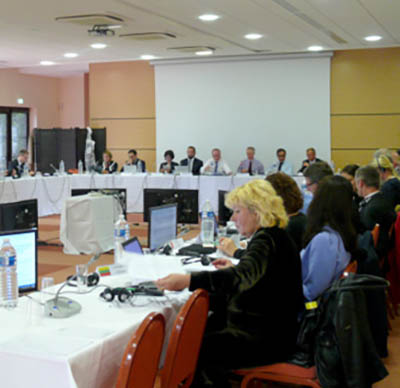

At the meeting on 4 October, the members of the AC adopted the following:
- the revision of the 2016 budget;
- the draft budget for 2017;
- the procedure to assess non EU-based examination offices before initiating technical cooperation;
- the CPVO policy on maintaining a reasonable free reserve based on: (a) a free reserve set at 50 % of payment budget, (b) fixed examination fees for applicants for 4 years based on cost calculation made every 4 years and inflation rate added in the intervening years for examination office remunerations, and (c) annual fees adapted to maintain the free reserve;
- the procedure to assess non EU-based examination offices before initiating technical cooperation;
- the modified composition of the AAB until end 2018;
- the entrustment of the following examination offices (EO):
- NIAB (United Kingdom);
- Animal and Plant Health Agency (APHA) (United Kingdom);
- National Food Chain Safety Office (NÉBIH) (Hungary);
- Centre Wallon de Recherches Agronomiques (Belgium).
- one revised and two new technical protocols for CPVO-TP/315/1 - Plectranthus L’Hér. excluding P. scutellarioides, CPVO-TP/305/1 - Campanula L. and CPVO-TP/163/2 - Malus Mill;
- the novelty guidelines.
They furthermore agreed on the setting up of the ‘contribution working group’ in the framework of potential developments for Variety Finder.
The members of the AC also took note of the following:
- the 2015 final accounts;
- the AIPH request to become observers to the CPVO’s ACs;
- the report of the President of the CPVO with its statistics;
- the follow-up on the request to extend the duration of CPVR for certain species;
- the state of the project for sharing online applications;
- the state of affairs of the international system of cooperation project (UPOV) and the possible consequences for the CPVO;
- the current and future cooperation between the CPVO and the EPO;
- the outcome of the first meeting of the working group aiming at preparing the revision of the current explanatory notes on variety denominations;
- the report on the first meeting of the Imoddus group aiming at developing a strategy on how to integrate BMT into DUS testing and proposing R&D projects for co-funding by the CPVO;
- the internal audit report;
- the report on activities beyond EU borders;
- the CPVO policy on declaration of conflict of interest for AC members and alternates;
- the state of affairs of R&D projects and of the adoption by the President of the Office of a new CPVO internal procedure for processing R&D projects;
- the consolidated document on criteria applied by CPVO when attributing candidate varieties to examination offices;
- the storage of DNA samples of roses would be limited to 5 years for EUR 50. After 5 years, if necessary the breeders would be contacted for follow-up.
Finally, the AC members took note that there was no official request from the UK under Article 50 of the Treaty to implement Brexit. At EU level, a formal request from the UK authorities was necessary before starting any discussion or taking any action. At national level, Member States could take any initiative they deem necessary.
| Chair of the Administrative Council |
|---|
| Mr A. Mitchell since 12 March 2015 |
| Vice-Chair of the Administrative Council |
|---|
| Ms B. Pavlovska since 12 March 2015 |
| Members of the Administrative Council | |
|---|---|
| Belgium | Ms F. De Schutter (member until 1 August 2016) Mr B. Coene (member since 28 November 2016) Ms M. Petit (alternate until 15 April 2016) Mr G. Bailleux (alternate since 28 November 2016) |
| Bulgaria | Ms B. Pavlovska Mr T. Gadev (alternate) |
| Czech Republic | Mr D. Jurecka Ms R. Safarikova (alternate) |
| Denmark | Ms K. Riskaer Ms M. L. Sonne (alternate until 22 July 2016) Ms K. Bech Klindt (alternate since 1 September 2016) |
| Germany | Mr U. von Kröcher Mr H. Freudenstein (alternate) |
| Estonia | Ms L. Puur Alternate vacant |
| Ireland | Mr D. Coleman Mr J. Claffey (alternate until 1 April 2016) Mr D. Cummins (alternate since 1 April 2016) |
| Greece | Mr E. Pilatos Ms A. Georgoula (alternate) |
| Spain | Ms E. Esteban Rodrigo Mr L. Salaices Sanchez (alternate until 5 February 2016) Ms B. Rodriguez Sendon (alternate since 8 February 2016) |
| France | Mr A. Tridon Ms A. Chan-Hon-Tong (alternate) |
| Croatia | Mr I. Delic Alternate vacant |
| Italy | Ms I. Pugliese Alternate vacant |
| Cyprus | Mr C. Christou Mr C. Nicolaou (alternate) |
| Latvia | Member vacant Ms D. Bajale (alternate until 29 July 2016) Ms I. Ovsjaņņika (alternate since 17 August 2016) |
| Lithuania | Ms S. Juciuviene Ms I. Kemeziene (alternate until 26 February 2016) Ms R. Zuikiene (alternate since 26 February 2016) |
| Luxembourg | Mr M. Weyland Mr F. Kraus (alternate) |
| Hungary | Mr Z. Csürös Mr S. Farkas (alternate) |
| Malta | Ms M. Delia Mr M. Cardona (alternate) |
| Netherlands | Mr M. Valstar Mr K. van Ettekoven (alternate) |
| Austria | Mr P. Zach Mr H. Luftensteiner (alternate) |
| Poland | Mr E. Gacek Mr M. Behnke (alternate) |
| Portugal | Ms A. P. Cruz de Carvalho Ms C. Sà (alternate) |
| Romania | Mr M. Popescu Ms M. Ciora (alternate) |
| Slovenia | Ms J. Jeman Cvelbar Ms H. Rakovec (alternate) |
| Slovakia | Ms B. Bátorová Ms L. Gasparova (alternate) |
| Finland | Ms T. Hietaranta Mr M. Puolimatka (alternate) |
| Sweden | Mr J. Weibull Ms C. Knorpp (alternate) |
| United Kingdom | Mr A. Mitchell Ms E. Nicol (alternate until 1 March 2016) Mr M. Watts (alternate since 1 March 2016) |
| European Commission | Mr L. Miko Ms D. Simion (alternate until 1 January 2016) Ms D. André (alternate since 1 February 2016) |
6. Organisation of the CPVO

In December 2016, the CPVO employed 44 persons: 10 officials and 34 temporary agents. Twelve nationalities from the Member States of the EU were represented.
Under the general direction of its President, assisted by the Vice-President, the Office is organised internally into three units and a number of support services, including a service responsible for the quality auditing of EOs. This service is under the administrative responsibility of the President while being independent with regard to its audit operations.
The Technical Unit has the following principal tasks: general coordination of the various technical sectors of the CPVR system; reception and checking of applications for protection; organisation of technical examinations or takeover reports; organisation of variety denomination examinations; preparation for the granting of rights; maintenance of the Office’s registers; production of official technical publications; relations with applicants, national offices, stakeholders and international organisations; active participation in international committees of technical experts; and cooperation in the development of technical analysis and studies intended to improve the system (namely CPVO R&D projects). Moreover, advice is given to the Member States in relation to variety denomination proposals received within the framework of national listings and national plant breeders’ rights.
The Administration Unit consists of the following three sections.
- The administrative section, which deals with the organisation of the Office’s publications, and the reporting of the Office’s activities to the Commission.
- The financial section, which deals with the management of financial transactions; treasury management; maintenance of the budgetary and general accounts and preparation of budgets and financial documents; and the management of the fees system.
- The IT section ensures that the Office runs smoothly in computing terms. Its tasks include analysis of the Office’s hardware and software requirements; design, development and installation of new programs specific to the Office; development and maintenance of the Office’s websites; installation of standard programs; maintenance of computer installations and their administration; ensuring the security of the computer system; running the helpdesk; and interinstitutional cooperation in computing.
The Legal Unit provides legal advice to the President and other staff members of the Office, in principle on matters related to the CPVR system, but also on questions of an administrative nature; provides legal interpretations and opinions and also draws up draft legislation; participates in various CPVO committees, thus ensuring that EU procedures and legislation are respected; manages the administration of objections to applications for CPVRs; and provides the secretariat of the Office’s Board of Appeal. The Legal Unit is also responsible for the public procurement and the administration, management and monitoring of the Office’s inventory of movable property and buildings, and the administration of logistical and operational resources with a view to ensuring the smooth functioning of the Office.
The Human Resources Service deals with the administration and management of the Office’s human resources in compliance with the Staff Regulations of Officials and the Conditions of Employment of Other Servants of the European Union (hereinafter referred to as the Staff Regulations).
The Public Relations Service is responsible for external communication and exhibitions (the CPVO newsletter, the annual report, fairs, etc.).
The Quality Audit Service is responsible for verifying that EOs meet the quality standards required for providing services to the CPVO in the area of testing the compliance of candidate varieties with the DUS criteria, in addition to novelty.
In 2016, the CPVO hosted five trainees who joined the Office under the traineeship procedure to allow young university graduates to gain experience in the Office for a period of up to 6 months. As of 31 December 2016, three of them were still present. The CPVO also had one interim agent (contract for limited period of time) in the Administration Unit — and two IT external consultants were present in the Office (one on a full-time and the other on a half-time basis).
In 2016, the CPVO prepared a social report with information concerning the turnover, work environment and social aspects of the CPVO. The different headings covered in the report were employment (staff members, recruitment procedures, staff joining or leaving the CPVO, promotions, absenteeism, gender balance), working conditions (hours worked, part-time work, parental leave, teleworking), training (language training, IT training, other training) and professional relations (Staff Committee). The CPVO’s social reports from 2006 to 2016 can be consulted on the CPVO website.

Alban Colin
Trainee
Administration Unit

Aimilios-Artemios Stragalinos
Trainee — Legal Unit

Iris Garcia Berbegal
Trainee
Data protection officer

Christophe Yakovleff
Interim agent
Administration Unit

Maël Godard
External consultant Administration Unit (IT section)

Renaud Chollet
External consultant Administration Unit
(IT section)
ORGANISATION chart of the CPVO


President
Martin Ekvad

Vice-President
Carlos Godinho

Assistant to the Presidency
Cyrille Antoine

Assistant to the Presidency
Laurence Dumont

Human Resources Service
Deirdre Killeen

Human Resources Service
Anna Verdini

Public Relations/Training
Fabienne Santoire

Quality Audit Team Leader/ Data Protection Officer
Gerhard Schuon

Head of the AU
James Moran

Assistant to the Head of the AU
Béatrice Hodet

Accounting
Valérie De Caestecker

Accounting
Anne-Marie Fernandez

Evaluation/Internal Audit and Control
Roseline Fagel

Finances
Ekaterina Mantziaris

Information Technology
Sébastien Beugnier

Information Technology
Patrick Lecoq

Information Technology
Laura Naie

Information Technology
Marc Rouillard

Head of the Legal Unit
Francesco Mattina

Assistant to the Legal Unit
Marleen Van de Meulebroeke

Legal Advisor
Montserrat García-Moncó Fuente

Board of Appeal/ Quality Audit
Véronique Doreau

Procurement and Logistics
Thierry Cluzeau

Procurement and Logistics
Isabelle Lanteri

Procurement and Logistics
Gil Oliveira

Procurement and Logistics
Manuel Soares Teixeira

Head of the TU
Dirk Theobald

Deputy Head of the TU
Jean Maison

Assistant to the Head of the TU
Aline Noguès

Agricultural species
Anne Weitz

Denominations
Carole Bonneau

Denominations
Rudi Caes

Denominations
Bénédicte Legrand

Fruit and ornamental species
Urszula Braun-Młodecka

Fruit and ornamental species
Jens Wegner

Fruit and vegetable species
Sergio Semón
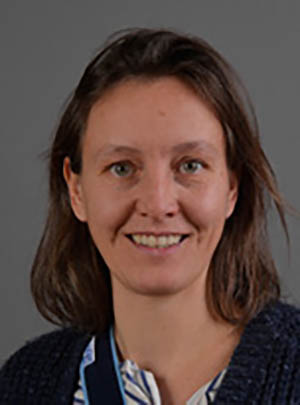
Ornamental species
Laetitia Denécheau

Register
Pierre-Emmanuel Fouillé

Register
Anne Gardener

Register
Nadège Grantham

Register
Francesco Saldi

Technical Unit Assistant
Ghislaine Guilbert

Technical Unit Assistant
Francesca Rampazzi

Technical Unit Assistant
Laurence Théodore
NB: The above organisation chart comprises the staff of the CPVO employed as officials and temporary agents on 31 December 2016.
7. Quality Audit Service
The Quality Audit Service (QAS) implements the CPVO’s quality audit programme. It carries out regular assessments at EOs in order to check whether they fulfil the entrustment requirements when testing candidate varieties against the DUS criteria. The assessments relate to any work in relation to DUS activities for the species within the EOs’ scope of entrustment.
7.1. Assessment of examination offices
The total of seven assessments carried out in 2016 consisted entirely of regular audit visits. All scope extension requests could be integrated in the regular audits and accordingly no scope extension or surveillance audits had been initiated. The assessments were based on the updated version (3.0) of the entrustment requirements that had been adopted at the end of 2015. Where necessary, audit observations were effectively addressed by EOs. The entrustment recommendations to the members of the AC were all positive.
7.2. Audit programme
With the 2016 assessments, the third audit cycle (2016-2018) since the inception of the programme in 2010 was launched. It is also the beginning of implementing audit fees. The Administrative Council adopted an audit fee scheme in 2014 in order to share the audit related costs evenly between the network of examination offices and the CPVO. Concurrent with the triennial audit programme, the fee level is defined for a 3-year period. All entrusted examination offices had opted for an annual payment of a third of the respective fees. The invoicing is prior to the on-site visiting period. Delayed payments could therefore impact on the conduct of the audits, an incident that would effectively jeopardise the continuous entrustment of examination offices concerned. However, none of the assessments organised in 2016 had been affected by such a delay.
The pool of technical experts, currently comprising 31 individuals, had received a boost with 16 new members in the course of 2015. A meeting combined with an audit training provided by AFNOR (French Standardisation Association) was organised and attended by all newly appointed experts and by the majority of the long-standing experts in the beginning of 2016. Ten technical experts had been involved in assessments initiated in 2016.
Interest in the audit programme from outside the Member States has triggered activities for disseminating information and providing training.
| First name | Last name | Nationality | Mandate until end of |
|---|---|---|---|
| Lubomir | Basta | SK | 2018 |
| Luigi | Bavaresco | IT | 2018 |
| Henk | Bonthuis | NL | 2018 |
| Julia | Borys | PL | 2018 |
| Richard | Brand | FR | 2018 |
| David | Calvache | ES | 2018 |
| Andreja | Cerenak | SI | 2018 |
| Alexandra | Chatzigeorgiou | EL | 2018 |
| Anne-Lise | Corbel | FR | 2018 |
| Henk | de Greef | NL | 2018 |
| Miguel | Diaz Morant | ES | 2018 |
| Anabela | dos Santos Rodrigues Rocha | PT | 2018 |
| Antonio | Escolano | ES | 2018 |
| Zsuzsanna | Füstös | HU | 2018 |
| Joël | Guiard | FR | 2018 |
| Marianna | Jakubova | SK | 2018 |
| Bogna | Kowalczyk | PL | 2018 |
| Karolina | Lenartowicz | PL | 2018 |
| Clarisse | Leclair | FR | 2018 |
| Andrea | Menne | DE | 2018 |
| Jesus | Merida | ES | 2018 |
| Hilary | Papworth | UK | 2018 |
| Andrea | Povolna | CZ | 2018 |
| Karin | Riemer | DE | 2018 |
| Ivana | Rukavina | HR | 2018 |
| Erik | Schulte | DE | 2018 |
| Elizabeth | Scott | UK | 2018 |
| Zsolt | Szani | HU | 2018 |
| Jutta | Taferner-Kriegl | AT | 2018 |
| Swenja | Tams | DE | 2018 |
| Jennifer | Wyatt | UK | 2018 |
8. Research and development projects
In accordance with the rules established by the AC in 2002 and reviewed in 2015 for financial support for projects of interest to the CPVR system, the Office received four applications in 2016 for (co-)financing of R&D projects, the highest number of applications ever received in 1 year. In this section, the Office provides updated information about projects underway and follow-up measures taken in 2016 on projects already concluded.
8.1. Projects approved in 2016
‘Construction of a European potato database with varieties of common knowledge and its implementation in the potato DUS testing system’ (Potato III)
This project with a duration of 2 years was approved at the beginning of March 2016. It is a follow-up of the previous R&D projects: ‘Construction of an integrated microsatellite and key morphological characteristic database of potato varieties in the EU common catalogue’ and ‘Construction of a European potato database as centralised collection of varieties of common knowledge’.
This project is coordinated by BSA (DE) and involves the nine entrusted examination offices for potato: Naktuinbouw (NL), SASA (UK), Coboru (PL), OEVV (ES), DAF (IE), AGES (AT), UKZUZ (CZ), UKSUP (SK), CPVO and the European Seed Association (ESA).
The objective of the project is to continue the work on the set-up of the EU database for potato. The database used will be GEMMA, which has to be adapted to suit the requirements requested by the examination offices. Subsequently, data need to be entered. The morphological characteristics, molecular data and lightsprout pictures to be included have already been agreed. Further details on varieties, administrative data and morphological data still need to be discussed as well as the different agreements which will govern the running of that database.
The EOs will continue to send samples of applications to the labs for molecular profiling. The molecular database will be supplemented with varieties of the EU common catalogue in order to achieve a complete database.
The final report is expected to be delivered in beginning of 2018.
‘Ring tests for strawberry’
This project with a duration of 4 years was approved in May 2016, it is coordinated by the CPVO and includes all the CPVO entrusted examination offices for the species: BSA (DE), Coboru (PL), DGAV (PT) and OEVV (ES) as well as breeders’ representative — Ciopora.

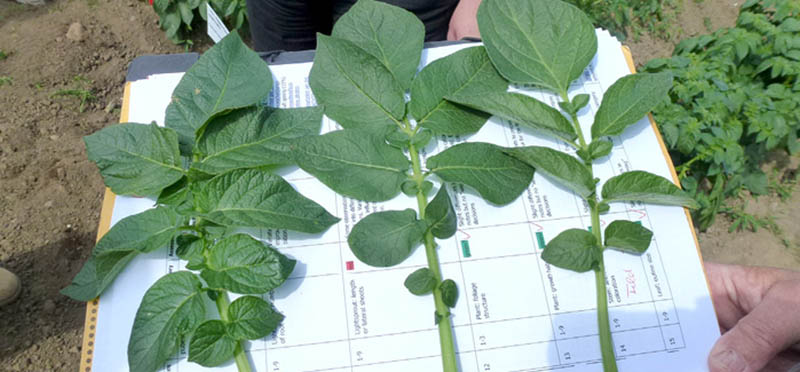
The project consists of the organisation of ring tests and meetings with the DUS experts aiming at:
- The harmonisation of the implementation of the protocol for strawberry. This includes:
- The harmonisation of variety descriptions;
- Minimising the room for individual interpretation for characteristic assessment in the guidelines;
- Standardisation of the transformation of observations to notes — suitability of reference varieties chosen in the protocol;
- Enhancing harmonisation of submission requirements;
- Verifying if there should be a different test duration depending on type of bearing;
- Verification of suitability of the characteristic on number of leaflets for inclusion in the Technical Protocol;
- Whether one single growing (fruiting) period would be sufficient in the majority of varieties in order to establish DUS.
- Review of the characteristics of the current protocol taking into account the following elements:
- Variation of the expression with the environment;
- Discriminating power;
- To consider removal/addition of some characteristics from/to the protocol. This could potentially contribute to reduce the number of periods of observation for some variety types.
The outcome of such ring tests would be valuable in order to aggregate comparable descriptions in a common database like GEMMA.
A set of eight varieties, widely known in the EU, will be grown in a DUS trial design in the premises of the four partners of the project. These varieties will be described and the descriptions will be analysed in the light of the objectives. Partners will meet at examination offices in order to monitor and analyse the results.
A common calibration book could be built up. Consequences could be proposals amending the UPOV guideline and the CPVO protocol and changes to the trial design.
The final report is expected to be delivered in 2019.
‘Harmonisation of resistance tests to diseases for DUS testing -3’ (Harmores 3)
This project is composed of two parts with a total duration of 3 years; part 1 (duration of 1 year) has been approved in June 2016, and part 2 (duration of 2 years) has been approved in October 2016 and will be initiated in 2017.
This project, which is a follow-up of a previous project, is coordinated by GEVES (FR), with the following project partners: Naktuinbouw (NL), INIA (ES), Central Institute for Supervising and Testing in Agriculture (CZ), Palacky University (CZ), National Food Chain Safety Office (HU), CREA (IT), SASA (UK), CTIFL (FR) and the European Seed Association (ESA).
The project aims to harmonise the resistance tests in terms of reference material (isolates and varieties), test conditions and notation scales, and to propose new harmonised and robust protocols to the CPVO for subsequent adoption in the technical protocols of the species in question. A focus for the Harmores 3 project is placed on intermediate resistance, which makes it more challenging than the previous projects, but for which harmonised protocols and reproducible results are of great importance.
The project aims at harmonising, at the European Union level, resistance tests to seven vegetable diseases:
- Meloidogyne incognita/tomato;
- Fusarium oxysporum f. sp. lycopersici Race 0 (ex 1);
- Fusarium oxysporum f. sp. lycopersici Race 1 (ex 2);
- Erysiphe pisi/pea;
- Powdery mildew/melon (Podosphaera xanthii);
- Fusarium oxysporum f. sp. melonis race 1.2/melon;
- Fusarium oxysporum f. sp. melonis race 2/melon.
The final report is expected to be delivered in 2019.
‘Test of the potential use of SNP markers on oilseed rape varieties’
This project was approved in October 2016 and has a duration of 1 year. The project aims to examine the potential use of single-nucleotide polymorphism (SNP) markers as a tool for the management of oilseed rape (Brassica napus L.) (OSR) reference collection.
The project is coordinated by GEVES (FR), with the following project partners: APHA, NIAB (UK), BSA (DE), Coboru (PL), Department of Variety Testing (DK), INIA (ES), UKSUP (SK), UKZUZ (CZ) and the European Seed Association (ESA).
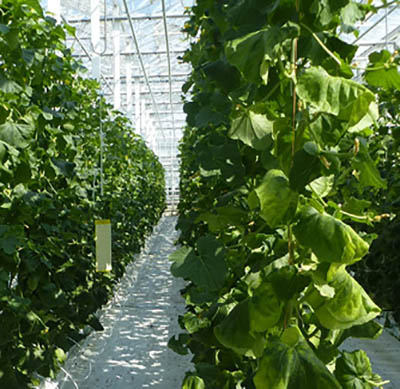
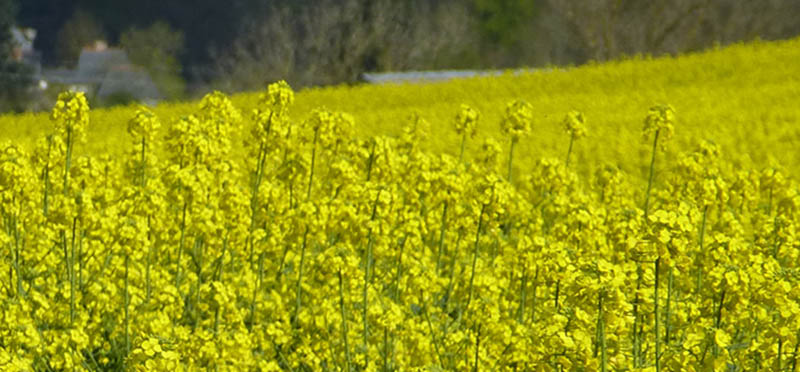
The objectives are:
- selection and validation of a suitable set of SNP markers from the 1 536 free-access SNPs;
- method optimisation: assess the use of bulk of plants or seeds instead of individual plants.
Before assessing this new type of molecular marker on a large number of varieties, more knowledge and background are needed. It is necessary to know if these markers can be used easily on partially out-crossing allotetraploid species such as OSR and if a bulking strategy could be considered for future application.
Two laboratories from France and the United Kingdom will participate in this first step. A set of 500 SNP will be tested on different matrices. Only the most efficient markers will be kept and bulking strategy will be assessed.
The main objective of the project is to select a reliable marker set as well as an applicable procedure for routine genotyping. By reviewing the results, a protocol to genotype different varieties with marker combinations could be proposed and a project would follow with the aim of combining genotypic and phenotypic data to optimise OSR reference collection management.
8.2. Projects underway in 2016
‘Case study on minimum distances between vegetatively reproduced ornamental and fruit varieties’
This project was approved in November 2015; it focuses on the possible effects of the introduction of minimum distances according to the Ciopora position on minimum distance for three vegetative reproduced species: apple (fruit), rose (cut flower and outdoor roses) and Pelargonium (pot plant). The project has a duration of 1 year.
The project is coordinated by Naktuinbouw (NL), with the following project partners: Bundessortenamt (DE), GEVES (FR), UKZUZ (CZ), NIAB (UK) and Ciopora.
The Ciopora position paper on minimum distance introduces the wish to introduce the change from the present botanical-driven definition of the requirement of a variety to be clearly distinguishable into a system that takes into account only those characteristics that represent a certain agreed commercial importance for the species concerned. This project aims to test if it is feasible to apply this approach and identify possible problems in doing so. The kick-off meeting took place on 1 December 2015.
The analysis will be given in draft reports per examination office that will be discussed in a joint meeting with the participants, Ciopora and CPVO.
A final report will be presented in the course of 2017.
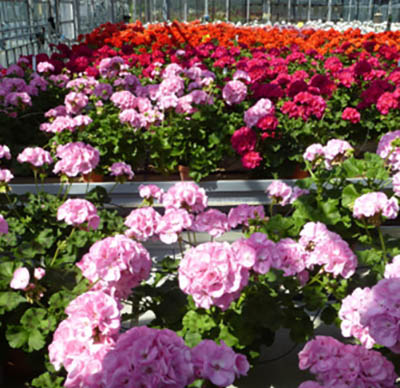

8.3. Follow-up of finalised research and development projects
‘Effect of seed priming on vegetable DUS tests’
Subsequent to the successful completion of the project, the three entrusted examination offices (Naktuinbouw, GEVES, OEVV/INIA) accepted the principle of using primed seeds for the DUS tests of eggplant and tomato rootstock varieties if such seeds are properly labelled and delivered in optimal packaging. Proposals for alternative submissions of primed seeds for the DUS tests of eggplant and tomato rootstock candidate varieties were received during the course of 2016 from all the three entrusted examination offices involved in the project. These were subsequently published in the ‘S2’ Gazette of the CPVO on the CPVO website, thus allowing applicants to submit if they wish, primed seed of candidate varieties for these species for the 2016/17 submission period of new DUS tests.
‘Harmonisation of vegetable disease resistances 2 (Harmores 2)’
Subsequent to the successful completion of the project, the 2016 CPVO’s vegetable crop experts meeting (VEM16) met in November to discuss partial revisions of the technical protocols for pea, pepper and lettuce, which implanted the proposals for improvements emanating from the Harmores 2 project. The 2016 vegetable crop experts meeting agreed with the proposals, whilst also recommending that the partial revision to the protocols be backdated to 1 January 2017 so that the improved methodologies could already be used for new DUS tests commencing in 2017. These partial revisions will now be presented to the Administrative Council for approval in March 2017, so that they can be implemented with a retroactive effect from 1 January 2017.
‘A European potato database as centralised collection of varieties of common knowledge’
This project approved in the beginning of 2014 was the follow-up of the already finalised project ‘Construction of an integrated microsatellite and key morphological characteristic database of potato varieties in the EU Common Catalogue’. This project was initiated by the CPVO (coordinator) and involved the nine entrusted examination offices for potato: Naktuinbouw (NL), SASA (UK), BSA (DE), Coboru (PL), OEVV (ES), DAF (IE), AGES (AT), UKZUZ (CZ), UKSUP (SK) and the European Seed Association (ESA).
The aim of the project was to set up and to maintain an EU database (DB) for potato varieties, containing morphological and molecular data and light sprout pictures plus a collection of DNA samples from those varieties.
The complete and maintained DB as a centralised collection of morphological and molecular data of varieties of common knowledge is an important tool for examination offices to organise the DUS tests in an efficient manner by providing reliable results for a crop without a living reference collection. The use of a centralised DB will improve quality and reduce the costs of the DUS test compared to the maintenance of several DBs on a national level. Furthermore, beside its purpose for the DUS test, a part of the DB (molecular profiles) might be used by titleholders in enforcement situations.
The project triggered intense discussions, in particular concerning agreements to be established between the project partners (examination offices and ESA) on one hand and the laboratories conducting the molecular work on the other hand, as well as very practical questions on the collection of data, such as submission of samples and dispatching of the results obtained and the conduct of the database.
The final report was received in March 2016. It had been agreed to continue the work in a follow-up project in 2016-2017. The follow up project Potato III has been approved by the President of the Office in March 2016 and is described above.
‘Creation of a Common Maize Database for DUS studies through a partnership between Czech Republic, Hungary, Slovakia and the Community Plant Variety Office’
This project was formally approved by the CPVO in March 2014, it was coordinated by ÚKZÚZ having as partners NEBIH (HU) and UKSUP (SK).
The aim of the project was to establish a common maize database for DUS studies through a partnership between the Czech Republic, Hungary, Slovakia and the CPVO. This database contains harmonised morphological descriptions of maize lines and hybrids according to the CPVO technical protocol from all participating countries. It will be updated regularly and will be available for electronic consultation for each partner and the CPVO. Each partner is in charge of maintaining physically at his premises only the seeds of varieties corresponding to its climatic conditions and not conserved in the other examination offices. During the execution of the project an exchange of information and experiences took place with an expert from an examination office which is already sharing a maize database. The final report was received in March 2016. A discussion on the outcome and the intentions of CPVO took place in 2016 during the CPVO agriculture crop experts meeting, the conclusion was that the CPVO will reflect on the way forward as regards the set-up of a Common Maize DB.
‘Impact analysis of endophytes on the phenotype of varieties of Lolium perenne and Festuca arundinacea’
This project, initiated in January 2013, was coordinated by the CPVO and the Food and Environment Research Agency (FERA) (United Kingdom), with the following project partners: Bundessortenamt (DE), GEVES (FR) and the European Seed Association (ESA) (breeding companies: DLF Trifolium and Barenbrug). The project aimed at clarifying the possible impact that the presence of endophytes in varieties of Lolium perenne (Lp) and Festuca arundinacea (Fa) could have on the phenotype, and thus on the expression of the characteristics observed during the DUS tests and eventual consequences in terms of quality requirements for material to be submitted for that purpose. The project provided for the assessment of four varieties from each species, with two stages of endophyte infections (0 % and 100 % endophytes). These varieties have been integrated into regular DUS tests during two growing cycles using the relevant CPVO technical protocol. The establishment period of the plants took place in 2013. The final report was received in February 2016. It states that there is no significant difference in the DUS characteristics between endophyte-free material and endophyte-infested material.


Based on the absence of clear effects of endophyte presence on the morphological expression of the varieties, the CPVO, in agreement with the examination offices and breeders associations, has decided to continue accepting endophyte seed for the DUS test of a variety. As a consequence, question 9 in the Technical Questionnaire is kept and the option ‘not tested’ was added to the question on the endophyte status of the seeds.
‘Rose project: sampling, analysis and storage of DNA samples’
In June 2011, the CPVO proposed to the Administrative Council to go ahead with a pilot project on sampling and storing DNA of roses. It was decided to keep a DNA sample from the original plant material submitted for each technical examination, on a compulsory basis. One possible use of such a sample could be, in cases where there are doubts, to verify (as far as the applicable techniques allow) the identity of the material ordered in order to be grown as a reference in a DUS test, comparing the DNA fingerprint of the material received as a reference variety with the fingerprint of the DNA stored for that same variety. This sample could also be used in relation to the enforcement of rights at the request of the breeder. In a future context, this sample could be used in the management of the reference collection.
A procedure setting out the details of the DNA sampling as part of the technical examination has been defined, on the basis of which a call for tenders to select a laboratory was launched. In 2011, Naktuinbouw was entrusted for a period of 4 years ending in February 2015. The sampling started during the course of the 2011 DUS trial.
A DNA sample from the original plant material submitted for each rose’s technical examination has been kept on a compulsory basis over these 4 years, following the adopted procedure. The leaves have been collected in the different entrusted examination offices (Bundessortenamt, Naktuinbouw and NIAB) and sent to the entrusted laboratory (Naktuinbouw). DNA extractions and storage took place in this laboratory.
At the beginning of 2015, the CPVO made an internal analysis of the outcome of the project and the comments received by the project partners and breeders organisations (Ciopora and Plantum). During this period, none of these samples have been used either by the entrusted examinations offices or by the breeders.
The CPVO Administrative Council agreed, in March 2015, to extend the project for one more year, in order to avoid a gap in the DNA sample taking, since a new R&D project for roses was under preparation (the new R&D project intends to test the use of new molecular markers, which are considered to be of interest for the management of glass house rose reference collections).
Since the CPVO didn’t receive any formal proposal on this project until the first quarter of 2016, the AC has agreed in April 2016 to end the automatic storage of samples and to leave it on a voluntary basis, at the cost of the applicant/breeder as from September 2016. Clear procedures and framework of this service have been prepared by the CPVO, presented to the Administrative Council in October 2016 and communicated to the applicants/breeders.
9. Budget
9.1. Out-turn
The budget out-turn for 2016 showed a significant, but forecast decrease compared to 2015, mainly due to an increase in operational expenditure in line with the high number of examinations carried out. Revenue was slightly higher than in previous years due to the increase in the total number of titles granted.
| Net out-turn for the year 2016 | (million EUR) |
|---|---|
| Budgetary revenue (a) | 13.46 |
| Budgetary expenses (b) | 15.59 |
| Budgetary out-turn (c) = (a) – (b) | – 2.13 |
| Non-budgetary receipts (d) | 0.10 |
| Net out-turn for the budgetary year 2015 (e) = (c) + (d) | – 2.03 |
The net out-turn for the year was slightly over EUR 2 million negative, compared to EUR 1 million negative for the previous year. This fall is fully in line with the CPVO’s policy of reducing the accumulated free reserve.
9.2. Revenue
The Office’s revenue mainly comprises various fees paid by applicants for and holders of CPVRs, and revenue from interest on bank accounts. The total revenue collected in 2016 was EUR 13.46 million.
| Variation (%) | 2016 (million EUR) | 2015 (million EUR) | |
|---|---|---|---|
| Fees | 4.73 | 13.26 | 12.66 |
| Bank interest | – 38.03 | 0.10 | 0.16 |
| Other revenue | + 501.48 | 0.10 | 0.02 |
| Total revenue | 4.82 | 13.46 | 12.84 |
The total fees received in 2016 amounted to EUR 13.26 million, representing an increase of 4.73 % in comparison with the previous year. Annual fees increased compared to previous years, with a higher number of titles in force and examination fees increasing slightly. Application fees, however, fell due to the reduction in fees for online applications.
9.3. Expenditure
In 2016, the total amount of recorded expenditure and commitments carried over was EUR 15.59 million, compared with EUR 13.98 million in 2015.
| Variation (%) | 2016 (million EUR) | 2015 (million EUR) | |
|---|---|---|---|
| Staff expenditure | 3.39 | 6.36 | 6.15 |
| Administrative expenditure | 41.86 | 1.99 | 1.40 |
| Operational expenditure | 12.68 | 7.24 | 6.43 |
| Total expenditure | 11.51 | 15.59 | 13.98 |
The salary grid for staff of the Office, being governed by the levels set by the Council of the European Union, is also subject to changes in line with inflation and career progression.
Increases in administrative expenditure are mainly due to higher spending on IT development and renovation works in the CPVO buildings.
Operational expenditure consists mainly of remuneration for examination offices. The increase in this expenditure is due to the increase in the number of applications in the previous year, and the number of examinations increasing accordingly.
9.4. Conclusion
The net result in 2016 is significantly lower than in the previous year. This reduction was foreseen and it is expected that in 2017 the CPVO will return to a positive out-turn as the new annual fee comes into force on 1 January 2017.
10. Developments in the system
10.1. Regulatory
10.1.1. New proceedings regulation
On 22 September 2016 the Commission Implementing Regulation (EU) 2016/1448 of 1 September amending Regulation (EC) No 874/2009 of 17 September 2009 establishing implementing rules for the application of Council Regulation (EC) No 2100/94 as regards proceedings before the CPVO entered into force. This new proceedings regulation contains important changes, concerning among others, the designation procedure of examination offices including the entrustment procedure, the designation of authorities to conduct the DUS test outside of the EU, and the procedure for taking over other examination reports issued by the said authorities which are not part of UPOV, but parties to the Agreement on Trade-Related Aspects of Intellectual Property Rights (‘TRIPS’) under the amended Article 27 of that regulation. Being one of the main aims of the new proceedings regulations to encourage the use of electronic means by the Office, it is now established that the certificate for a CPVR should only be delivered electronically. Further on, other relevant amendments concern the introduction of rules on nullity and cancellation proceedings, the service of document by electronic means, and the service to procedural representatives. Finally, the submission of online applications through the ‘MyPVR’ electronic platform is promoted.
10.1.2. Fees
In 2016, the European Commission revised Commission Regulation (EC) No 1238/95 of 31 May 1995 establishing implementing rules for the application of Council Regulation (EC) No 2100/94 as regards the fees payable to the CPVO (the fees regulation). With Commission Implementing Regulation (EU) 2016/2141 of 6 December 2016, which is applicable as from 1 January 2017, the fees regulation has been amended accordingly. The aim of the revision is to increase, on the one hand, the annual fee which now amounts to EUR 330 for each year of the duration of a CPVR and, on the other hand, to adapt the fees for the technical examination in order for them to reflect the costs to be paid by the Office to the examination offices. The fees to be paid for the technical examination of a variety have, therefore, been amended according to each cost group listed in Annex I of the same regulation. There will be no changes to the fees in the coming 4 years and a new analysis will be carried out to discuss the fees.
10.1.3. Patents and plant variety rights (Commission Notice on certain articles of Directive 98/44/EC)
Following the decisions of the Enlarged Board of Appeal of the EPO on the Broccoli and Tomato II cases, and the controversy that arose in this respect in the breeder’s community, the European Parliament passed a non-legislative resolution on 17 December 2015 to mainly clarify existing EU rules, in particular the EU’s Directive 98/44/EC of the European Parliament and of the Council of 6 July 1998 on the legal protection of biotechnological inventions (the biotech directive). Following the seminar hosted by the CPVO on 24 June 2015 in Brussels, the CPVO fostered a closer dialogue with the EPO. Consequently, on 11 February 2016, the CPVO signed an administrative arrangement with the EPO to enhance their cooperation through the exchange of technical knowledge and best practices in the area of plant-related patents and plant variety rights. The first implementation action of this agreement was the celebration on 21 and 22 September 2016 in Angers of the first workshop between CPVO and EPO examiners. A study visit to GEVES was also organised. The next steps will be the celebration of a second workshop in Munich on 30 March 2017 as well as a joint public conference to be held in Brussels in autumn 2017. On 3 November 2016, the European Commission issued a notice on certain articles of the biotech directive where it concludes that the intention of the directive was to exclude from patentability products (plants and parts thereof) that are obtained by means of essentially biological processes, such as crossing and selection.
10.1.4. Guidelines on novelty
On 4 October 2016, the AC of the CPVO adopted general guidelines on Article 10 of Council Regulation (EC) 2100/94 of 27 July 1994 on CPVR regarding the novelty requirement. The aim of the guidelines is to provide a uniform interpretation of the concept of first disposal. In this regard, the date of the physical delivery of variety constituents or of the harvested material will determine the first date of exploitation for the purposes of commercial exploitation of the variety under Article 10 of the basic regulation.
10.2. Technical
10.2.1. Applications for Community plant variety protection
In 2016, the CPVO received 3 299 applications for Community plant variety protection, which represents an increase of 6 % compared to the previous year. Graph 1 shows the evolution of the numbers of applications received by the Office (all figures are based on the date of arrival of the application documents at the Office). This is the second highest number ever. The figures also seem to suggest that, after an annual increase during the first 10 years (1996 to 2006, figures not shown) of the existence of the Community plant variety rights system, the application numbers have now stabilised. The record numbers of 2014 are probably to be seen together with the decrease in 2015: applicants wanting to avoid the increase in examination fees for applications filed as from 1 January 2015 submitted their applications at the end of 2014.

Graph 2 represents the shares of the crop sectors in relation to the number of applications received in 2016.

Graph 3 shows the evolution of the number of applications per crop sector since 2007. In 2016, the Office observed a particularly sharp increase in application numbers in the vegetable sector with + 174 applications (+ 31.81 %). All other sectors were stable: agricultural crops + 6 applications (+ 0.64 %), ornamentals + 13 applications (+ 0.94 %) and in the fruit sector – 5 applications (– 2.02 %).

In 2016, 668 applicants filed applications for CPVRs, 32 more (+ 5 %) than in 2015. The following tables list, for each crop sector, the 15 most frequent users of the Community system and their respective numbers of applications filed in 2016. These top 15 applicants have a relative share of applications ranging from 90.63 % (in 2015, 87.77 %) for vegetable species, 59.07 % (in 2015, 62.92 %) for agricultural species and 41.57 % (in 2015, 43.48 %) for fruit species to as little as 30.49 % (in 2015, 33.75 %) for ornamental species. This range not only reflects the degree of concentration in breeding, which is particularly advanced in the vegetable sector, but also shows that, in the case of ornamentals, a great number of ‘small’ breeders are in business and seeking protection for their varieties. The figures do not take into account possible controlling agreements between companies; the actual level of concentration may thus be higher.
| Top 15 applicants | Country | Number of applications in 2016 |
|---|---|---|
| Pioneer Overseas Corporation | United States of America | 107 |
| Limagrain Europe SA | France | 78 |
| KWS Saat SE | Germany | 60 |
| RAGT 2n SAS | France | 59 |
| Syngenta Participations AG | Switzerland | 44 |
| Monsanto Technology LLC | United States of America | 40 |
| Pioneer Hi-Bred International Inc. | United States of America | 38 |
| KWS Momont Recherche SARL | France | 34 |
| Norddeutsche Pflanzenzucht Hans-Georg Lembke KG | Germany | 27 |
| Deutsche Saatveredelung AG | Germany | 25 |
| KWS Lochow GmbH | Germany | 21 |
| Nordsaat Saatzucht GmbH | Germany | 17 |
| Soltis SAS | France | 17 |
| Saatzucht Donau GmbH & Co. KG | Austria | 15 |
| Secobra Recherches SAS | France | 14 |
| Total | 596 |
| Top 15 applicants | Country | Number of applications in 2016 |
|---|---|---|
| Monsanto Vegetable IP Management BV | Netherlands | 168 |
| Rijk Zwaan Zaadteelt en Zaadhandel BV | Netherlands | 111 |
| Nunhems BV | Netherlands | 82 |
| Enza Zaden Beheer BV | Netherlands | 71 |
| Bejo Zaden BV | Netherlands | 68 |
| Syngenta Participations AG | Switzerland | 50 |
| Vilmorin SA | France | 33 |
| HM.Clause SA | France | 27 |
| De Groot en Slot Allium BV | Netherlands | 21 |
| Hazera Seeds Ltd. | Israel | 15 |
| Takii & Co. Ltd. | Japan | 10 |
| Semsearch BV | Netherlands | 9 |
| HILD Samen GmbH | Germany | 8 |
| Laboratoire ASL SNC | France | 8 |
| Asparagus Beheer BV | Netherlands | 6 |
| Total | 687 | |
| Top 15 applicants | Country | Number of applications in 2016 |
|---|---|---|
| PSB Produccion Vegetal SL | Spain | 17 |
| AC Fruit SAS | France | 13 |
| Agro Selections Fruits SAS | France | 9 |
| Institut National de la Recherche Agronomique (INRA) | France | 8 |
| Institute of Experimental Botany AS CR v.v.i. | Czech Republic | 7 |
| Fall Creek Farm and Nursery Inc. | United States of America | 7 |
| Zouk BVBA | Belgium | 7 |
| Newcot SAS | France | 7 |
| Driscoll’s Inc. | United States of America | 5 |
| Walter Hartmann | Germany | 5 |
| René Monteux-Caillet | France | 5 |
| Fresh Forward Holding BV | Netherlands | 4 |
| Sun World International LLC | United States of America | 4 |
| Benoît Escande Editions (BEE) SARL | France | 4 |
| Viveros Proseplan SL | Spain | 4 |
| Total | 106 | |
| Top 15 applicants | Country | Number of applications in 2016 |
|---|---|---|
| Anthura BV | Netherlands | 65 |
| Syngenta Participations AG | Switzerland | 61 |
| Nils Klemm | Germany | 35 |
| Poulsen Roser A/S | Denmark | 30 |
| Deliflor Royalties BV | Netherlands | 30 |
| Danziger ‘DAN’ Flower Farm | Israel | 29 |
| Beekenkamp Plants BV | Netherlands | 26 |
| Florist Holland BV | Netherlands | 25 |
| De Ruiter Intellectual Property BV | Netherlands | 24 |
| Vletter & Den Haan Beheer BV | Netherlands | 23 |
| Piet Schreurs Holding BV | Netherlands | 21 |
| Fides BV | Netherlands | 21 |
| W. Kordes’ Söhne Rosenschulen GmbH & Co KG | Germany | 21 |
| Rosen Tantau KG | Germany | 20 |
| Dekker Breeding BV | Netherlands | 20 |
| Total | 451 | |
Applicants from outside the EU must appoint a representative with a registered office or domicile inside the EU to handle their applications. Sometimes, mother companies located outside the EU appoint their daughter company in the EU; this is the case, for example, for Pioneer or Syngenta. EU applicants do not have such an obligation; however, some of them prefer to outsource the application procedure to an external agent. In 2016, 1 462 applications (44.32 %; in 2015, 44.26 %) were filed by 162 procedural representatives. The following table lists the 15 most active procedural representatives for 2016, having submitted 885 applications in total (in 2015, 944 applications were submitted by the 15 most active procedural representatives).
| Name of procedural representative | Country | Number of applications in 2016 |
|---|---|---|
| Royalty Administration International CV | Netherlands | 249 |
| Pioneer Génétique SARL | France | 130 |
| Syngenta Seeds BV | Netherlands | 109 |
| Hortis Holland BV | Netherlands | 62 |
| Hans-Gerd Seifert | Germany | 42 |
| Deutsche Saatgutgesellschaft mbH Berlin | Germany | 40 |
| Limagrain Nederland BV | Netherlands | 32 |
| Monsanto SAS | France | 32 |
| Limagrain Europe SA | France | 32 |
| Plantipp BV | Netherlands | 30 |
| Syngenta France SAS | France | 28 |
| Ronald Houtman Sortimentsadvies | Netherlands | 25 |
| WürtenbergerKunze | Germany | 25 |
| Star Fruits Diffusion SAS | France | 25 |
| Ten Hoopen Jonker Fresco — Attorneys at Law | Netherlands | 24 |
| Total | 885 | |
10.2.1.1. Ornamental species
With 42 % of the applications received in 2016, ornamentals continue to represent the largest group of applications filed for CPVRs. In absolute figures, application numbers were nearly unchanged (+ 13 applications): their relative share has decreased further which has to be attributed to the significant increase in application numbers for vegetable varieties.
A particularity of ornamentals is the great diversity of species. In all years, one observes for many of them a rather low number of applications per species.
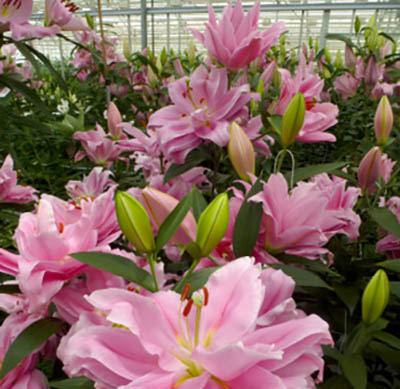

| 2012 | 2013 | 2014 | 2015 | 2016 | Total (1995-2016) | |
|---|---|---|---|---|---|---|
| All ornamental species | 1 406 | 1 654 | 1 787 | 1 383 | 1 396 | 32 390 |
Table 2 shows the 10 most important ornamental species in terms of the number of applications received over the last 5 years. Changes in the importance of most of these species seem to be rather accidental. Roses and chrysanthemums remained by far the most important species in 2016.
| Species | 2012 | 2013 | 2014 | 2015 | 2016 | Total (1995-2016) |
|---|---|---|---|---|---|---|
| Rosa L. | 131 | 231 | 181 | 161 | 185 | 4 042 |
| Chrysanthemum L. | 146 | 120 | 167 | 100 | 117 | 3 336 |
| Phalaenopsis Blume and xDoritaenopsis hort. | 47 | 110 | 113 | 44 | 51 | 977 |
| Calibrachoa Llave & Lex. and Petunia Juss. | 54 | 48 | 89 | 78 | 50 | 1 323 |
| Lilium L. | 37 | 68 | 86 | 58 | 50 | 1 229 |
| Pelargonium L’Hér. ex Aiton | 45 | 58 | 32 | 51 | 43 | 1 544 |
| Hydrangea L. | 19 | 29 | 64 | 26 | 64 | 479 |
| Gerbera L. | 36 | 47 | 48 | 39 | 30 | 1 066 |
| Dianthus L. | 54 | 39 | 40 | 26 | 35 | 920 |
| Anthurium Schott | 21 | 46 | 49 | 34 | 30 | 769 |
| Total | 590 | 796 | 869 | 617 | 655 |
The CPVO may base its decision to grant CPVRs on a technical examination carried out within the framework of a previous application for either plant breeders’ rights or national listing and where the DUS examination has been carried out at an entrusted EO. Such a takeover of reports concerns less than 5 % of ornamentals, which is a considerably lower percentage than for the vegetable or agricultural sectors and is due to the absence of any requirement for listing before commercialising ornamental varieties.
10.2.1.2. Agricultural species
The year 2016 showed a very slight increase of 0.64 % in the number of applications in comparison with the year 2015. In 2016, agricultural varieties represented 28.46 % of all applications. The number of applications received for the year (939) is, however, the third highest ever received in that sector.
Table 3 shows the number of applications received per year over all agricultural species since 2012, as well as the total figure for the years 1995-2016.
| 2012 | 2013 | 2014 | 2015 | 2016 | Total (1995-2016) | |
|---|---|---|---|---|---|---|
| All agricultural species | 780 | 800 | 1 026 | 933 | 939 | 14 288 |
Table 4 shows the number of applications for the 10 most important agricultural species for the last 5 years.
| Species | 2012 | 2013 | 2014 | 2015 | 2016 | Total (1995-2016) |
|---|---|---|---|---|---|---|
| Zea mays L. | 214 | 147 | 333 | 299 | 201 | 4 342 |
| Triticum aestivum L. emend. Fiori et Paol. | 83 | 129 | 139 | 113 | 153 | 1 748 |
| Brassica napus L. emend. Metzg. | 107 | 82 | 115 | 127 | 126 | 1 363 |
| Hordeum vulgare L. sensu lato | 72 | 85 | 73 | 78 | 69 | 1 201 |
| Solanum tuberosum L. | 75 | 77 | 72 | 59 | 79 | 1 510 |
| Helianthus annuus L. | 42 | 67 | 82 | 61 | 86 | 957 |
| Lolium perenne L. | 20 | 43 | 18 | 18 | 14 | 319 |
| Beta vulgaris L. ssp. vulgaris var. altissima Döll | 17 | 22 | 18 | 17 | 21 | 336 |
| Triticum durum Desf. | 18 | 15 | 23 | 7 | 26 | 301 |
| Avena sativa L. | 16 | 13 | 18 | 18 | 11 | 178 |
| Total | 664 | 680 | 891 | 797 | 786 |
In the agricultural sector, these 10 species represent about 84 % of all applications. As in previous years, maize is the most important species in the agricultural sector, whereas there is an important increase as regards wheat, potato, sunflower and durum wheat compared to 2015.
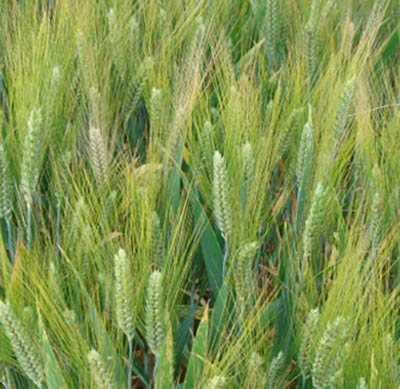
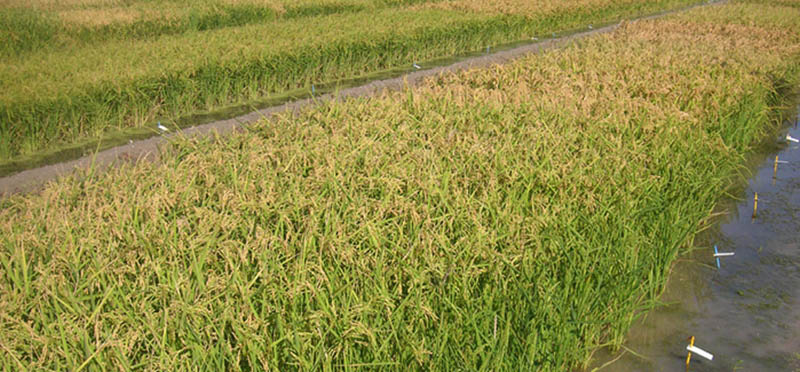
As for many applications, a DUS report is already available or the DUS test is ongoing. The Office, in accordance with Article 27 of the proceedings regulation, can take over the DUS report from entrusted EOs, if it constitutes a sufficient basis for a decision. In 2016, this concerned about 83 % of all agricultural applications. If this is not the case, the Office organises a technical examination carried out by an entrusted EO (see Graph 4). The relation between takeover and technical examination has been very stable over the years.

10.2.1.3. Vegetable species
The year 2016 showed a huge increase of 31.81 % in the number of applications in comparison with the previous year; this was an all-time record. Furthermore, vegetable varieties represented 21.86 % of all applications in 2016, which was their highest ever proportion of the overall number of annual CPVO applications (5 years earlier they made up just 14.48 % of all CPVR applications). As illustrated earlier in this chapter, applications are concentrated among a few breeding companies, of which Monsanto Vegetable IP Management BV and Rijk Zwann Zaadtelt en Zaadhandel were the top two applicants in the CPVR system in 2016. With the recent acquisitions of Monsanto by Bayer (owners of Nunhems BV) and of Syngenta by ChemChina, it will be interesting to see if there are mergers and rationalisations of certain breeding programmes which could have an impact on future numbers of vegetable applications for CPVR. Notwithstanding the former, the outlook for the vegetable sector looks healthy for the foreseeable future.
The number of applications in hybrid vegetable varieties was fairly stable in 2016 (239, compared to 233 in 2015), whereas the number of applications for parent lines more than doubled to 161 (from 69 in 2015); this was mainly attributable to one company reviewing its assets and protecting many of its parent lines. The other big increases in 2016 saw lettuce pulling ahead from the species tomato to remain unchallenged as the top vegetable species (and just nine applications below maize for the prize of the overall main CPVR species), as well as an almost doubling of applications for melon varieties, mostly attributable to parent lines.
| 2012 | 2013 | 2014 | 2015 | 2016 | Total (1995-2016) | |
|---|---|---|---|---|---|---|
| All vegetable species | 449 | 587 | 564 | 547 | 721 | 7 772 |
| Species | 2012 | 2013 | 2014 | 2015 | 2016 | Total (1995-2016) |
|---|---|---|---|---|---|---|
| Lactuca sativa L. | 104 | 135 | 132 | 141 | 192 | 2 083 |
| Solanum lycopersicum L. | 71 | 131 | 128 | 134 | 127 | 1 069 |
| Cucumis melo L. | 20 | 41 | 48 | 42 | 80 | 393 |
| Capsicum annuum L. | 33 | 48 | 36 | 49 | 65 | 480 |
| Cucumis sativus L. | 22 | 44 | 30 | 28 | 45 | 344 |
| Allium cepa (Cepa group) | 16 | 16 | 7 | 10 | 25 | 176 |
| Pisum sativum L. | 24 | 24 | 19 | 20 | 13 | 418 |
| Phaseolus vulgaris L. | 25 | 10 | 18 | 8 | 13 | 470 |
| Cichorium endivia L. | 16 | 11 | 11 | 10 | 10 | 180 |
| Spinacia oleracea L. | 9 | 9 | 14 | 9 | 7 | 154 |
| Total | 340 | 469 | 443 | 451 | 577 |
A species which almost made it into the 2016 top 10 for vegetables was Agaricus bisporus (button mushroom). This can be attributed to the fact that there have been very active exchanges in the last couple of years between the CPVO, the main Agaricus mushroom breeders, and the entrusted examination office NEBIH, to revise the substantially current UPOV guideline TG/259. Whereas mushrooms cannot be seen as being conventional vegetables species, there is more and more interest to protect mushroom varieties by the CPVR, since by their technical nature they can be easily copied. The CPVO as leading expert in the revision of the UPOV Agaricus bisporus guideline TG/59/2, working in close collaboration with the other Agaricus-interested experts, managed to finalise the revision of the UPOV guideline a year ahead of schedule, and it is hoped that this will be approved by the UPOV Technical Committee in April 2017. Once implemented, the CPVO will utilise the revised UPOV guideline for its new DUS tests, which should pave the way for a new wave of Agaricus mushroom applications, since breeders will have a more effective technical examination, which in turn will provide them with a stronger form of protection.
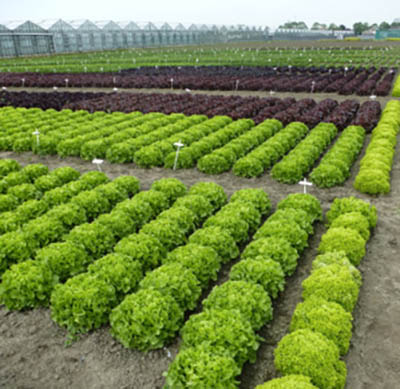
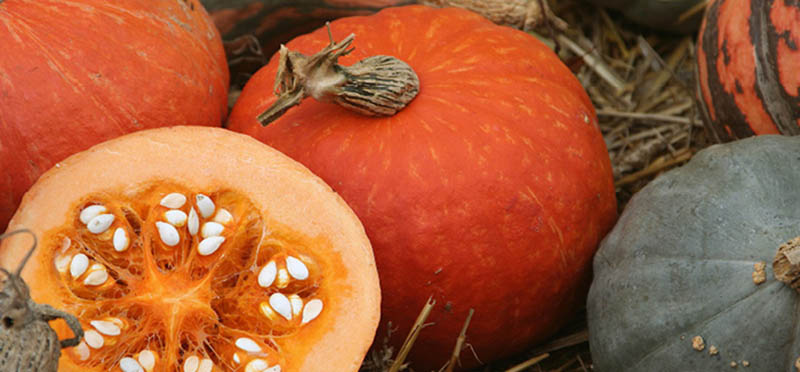


10.2.1.4. Fruit species
The number of fruit CPVR applications in 2016 remained at a high level. With only five applications less than in 2015, it was the fourth best year in the sector. The top three species in 2016 were peach, apple and strawberry. The number of applications for blueberry continued to decrease over the past 2 years.
| 2012 | 2013 | 2014 | 2015 | 2016 | Total (1995-2016) | |
|---|---|---|---|---|---|---|
| All fruit species | 233 | 256 | 249 | 248 | 243 | 3 641 |
| Species | 2012 | 2013 | 2014 | 2015 | 2016 | Total (1995-2016) |
|---|---|---|---|---|---|---|
| Prunus persica (L.) Batsch | 46 | 43 | 71 | 45 | 48 | 889 |
| Fragaria x ananassa Duchesne ex Rozier | 31 | 39 | 44 | 35 | 26 | 561 |
| Malus domestica Borkh. | 27 | 15 | 27 | 19 | 42 | 487 |
| Prunus armeniaca L. | 27 | 11 | 18 | 17 | 24 | 280 |
| Vitis L. | 10 | 34 | 10 | 24 | 16 | 221 |
| Vaccinium L. | 23 | 19 | 20 | 13 | 10 | 144 |
| Rubus idaeus L. | 22 | 13 | 13 | 11 | 13 | 163 |
| Rubus subg. Eubatus sect. Moriferi & Ursini | 5 | 10 | 7 | 10 | 5 | 57 |
| Prunus salicina Lindl. | 3 | 8 | 4 | 10 | 7 | 120 |
| Prunus avium (L.) L. | 7 | 4 | 1 | 9 | 4 | 110 |
| Total | 201 | 196 | 215 | 193 | 195 |
The organisation of DUS testing for tropical fruit crops is a continuous challenge in the fruit sector. In the course of 2016, the Administrative Council approved the takeover of reports from Colombian authorities for varieties of coffee. The CPVO was further searching for competent authority to carry out DUS testing of guava and papaya varieties. The newly adopted AC procedure establishing rules for assessment of non-EU examination offices is intended to be followed in order to organise the testing of some of these varieties.
The discussions with experts and breeders focused on: phytosanitary issues, organisation of apple testing, assessment of uniformity, progress in R&D projects and the experience of EOs as regards the implementation of Council Directive 2008/90/EC of 29 September 2008 on the marketing of fruit plant propagating material and fruit plants intended for fruit production.
In May 2016, the R&D project ring test for strawberries was approved. The participants of the project (Ciopora, Bundessortenamt, Coboru, DGAV and OEVV) will investigate possibilities for harmonisation of the DUS testing, updating example varieties, and check suitability of some characteristics proposed to be added to the Technical Protocol. The first meeting of the project partners took place in June 2016. During the meeting, a set of eight varieties belonging to different bearing types were chosen; the material of these varieties was delivered to examination offices and the observations will start in 2017.
The Office also hosted the UPOV TWF meeting, from 14 to 18 November 2016. The technical visit was organised by GEVES focusing on apple mutation varieties. The CPVO contributed to the TWF meeting with a number of presentations and documents including: updating variety descriptions — outcome of the survey; duration of DUS tests in the fruit sector; DUS examination of mutant varieties of apple; calibration book for harmonised variety description in apple; proposal concerning the ‘Guide to the UPOV Code System’ on the principal botanical name for inter-generic and interspecific hybrids; and the first draft of the pistachio test guidelines.
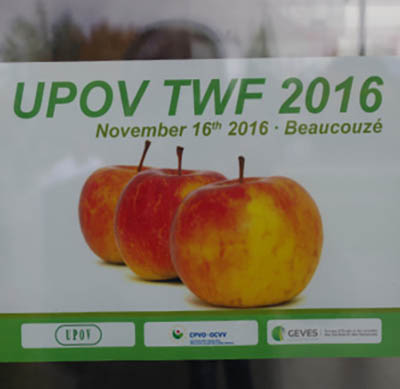

10.2.1.5. Origin of the applications
Since the creation of the CPVO, applications have been received from over 60 countries. Nearly every year, more than one third of all applications received have originated from the Netherlands, underpinning the important role of the Dutch in the breeding sector. The Netherlands is followed, quite some distance behind, by France, Germany and the United States. In 2016, only minor fluctuations were observed in the origin of applications. The table below gives an overview of the number of applications received from different EU Member States in 2016.
| Country of main applicant | Number of applications received in 2016 |
|---|---|
| Netherlands | 1281 |
| France | 466 |
| Germany | 395 |
| Denmark | 100 |
| United Kingdom | 96 |
| Italy | 81 |
| Spain | 70 |
| Belgium | 48 |
| Austria | 20 |
| Poland | 18 |
| Sweden | 16 |
| Czech Republic | 15 |
| Hungary | 6 |
| Ireland | 5 |
| Greece | 2 |
| Slovenia | 2 |
| Romania | 1 |
| Total | 2 622 |
Table 10 shows the application numbers for countries outside the EU.
| Country of main applicant | Number of applications received in 2016 |
|---|---|
| United States | 302 |
| Switzerland | 168 |
| Israel | 54 |
| Japan | 45 |
| Australia | 21 |
| Thailand | 21 |
| New Zealand | 16 |
| China | 11 |
| South Africa | 8 |
| Canada | 6 |
| Serbia | 5 |
| Taiwan | 5 |
| South Korea | 3 |
| Mexico | 3 |
| Brazil | 2 |
| Argentina | 1 |
| Belarus | 1 |
| Chile | 1 |
| Costa Rica | 1 |
| Norway | 1 |
| French Polynesia | 1 |
| Uruguay | 1 |
| Total | 677 |
10.2.2. Grants of protection
In 2016, the Office granted 2 980 titles for Community protection, which represents the highest number ever granted by the CPVO within a calendar year. This high number in grants is a direct consequence of the record number of applications received in the year 2014. A detailed list of all varieties under protection (as of 31 December 2016) is published on the CPVO website in the separate annex to this report.
By the end of 2016, there were 25 148 CPVRs in force. Graph 5 shows the number of titles granted for each year from 2007 to 2016 and illustrates the continuous increase in the number of varieties under protection within the Community system.

The development of the number of CPVRs in force must be seen in conjunction with the number of rights surrendered (Graph 6). The number of rights granted still greatly outweighs the number of surrenders. As older varieties are replaced by newer ones, the number of surrenders is expected to approach more closely the number of grants. The regular increase in the number of surrenders is therefore not a surprise. No research has been conducted to identify the reasons for greater deviations from the linear trend; they might be associated with ups and downs in the economic conditions, mergers of companies and a subsequent consolidation of the variety portfolio, or changes in the amount of the annual fee to be paid in order to keep a right in force.

Graph 7 shows the number of rights granted in the years 2007-2016 and those still in force on 31 December 2016. A large number of rights are surrendered within a few years. The CPVR system is still too new to be able to say how many varieties will actually enjoy their full term of protection of 25 or 30 years. However, figures suggest that it will be a relatively small percentage of all the varieties once protected. This also suggests that the current period of protection might generally be quite well-adapted to the needs of breeders.

At the end of 2016, of the 44 773 rights granted in total, 25 148 (56.17 %) were still in force. Table 11 illustrates that fruit varieties are generally kept protected for a longer period and that, within each crop sector, the situation varies from species to species. There might be a number of reasons for this phenomenon, such as a change in consumer preferences, breeding trends, differences in intensity of breeding activities, the time and expense required to develop new varieties or a recent boom in plant breeding.
| Crop sector | Species | Proportion (%) |
|---|---|---|
| Agricultural | 62 | |
| Hordeum vulgare L. sensu lato | 53 | |
| Zea mays L. | 60 | |
| Triticum aestivum L. emend. Fiori et Paol. | 60 | |
| Solanum tuberosum L. | 66 | |
| Festuca rubra L. | 79 | |
| Vegetable | 65 | |
| Cichorium endivia L. | 55 | |
| Lactuca sativa L. | 60 | |
| Solanum lycopersicum L. | 73 | |
| Capsicum annuum L. | 75 | |
| Daucus carota L. | 85 | |
| Ornamental | 49 | |
| Gerbera L. | 22 | |
| Chrysanthemum L. | 43 | |
| Rosa L. | 51 | |
| Phalaenopsis Blume & Doritaenopsis hort. | 68 | |
| Clematis L. | 89 | |
| Fruit | 79 | |
| Fragaria x ananassa Duch. | 67 | |
| Prunus domestica L. | 76 | |
| Prunus persica (L.) Batsch | 77 | |
| Malus domestica Borkh. | 79 | |
| Prunus avium (L.) L. | 91 |
10.2.3. Technical examinations
In 2016, the CPVO initiated 1 874 technical examinations, 92 more than in 2015. The increase is of course linked to the increasing number of applications. For vegetable and agricultural crops, a large number of technical examinations have already been carried out in the framework of the national listing procedure. If such a technical examination has been carried out by an entrusted EO, the CPVO can base its decision to grant CPVRs on a technical examination that has been carried out within the framework of a national application. By contrast, for ornamentals, only a few reports can be taken over from other authorities and, consequently, the lower application numbers have a direct impact on the number of technical examinations to be initiated.
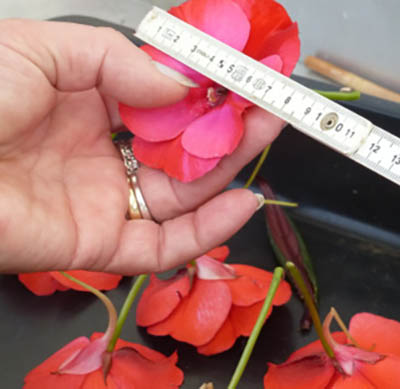

10.2.3.1. Sales of reports
National authorities from all over the world regularly base their decisions on applications for PVRs on technical examinations carried out on behalf of the CPVO (international cooperation, takeover of reports). Graph 8 illustrates the number of reports the Office has made available to national authorities.

By the end of 2016, the Office had sold 5 731 technical reports to 54 countries. During the year 2016, the five countries from which most requests emanated were Brazil, Canada, Ecuador, Colombia and France. In 2016, 50.81 % of requests concerned ornamental varieties, 36.38 % fruit varieties, 10.37 % agricultural varieties and 2.44 % vegetable varieties. In 2016, the Office received 492 requests from 28 countries.
The Office has set up a flexible approach in respect of the agreed UPOV fee for making reports available. Requesting countries can pay this fee directly to the CPVO, but they can also opt for the alternative, according to which the Office sends the invoice to the breeder. The report is always provided directly to the national authorities.
| Country | Number of reports bought |
|---|---|
| Brazil | 635 |
| Israel | 577 |
| Colombia | 552 |
| Ecuador | 488 |
| Switzerland | 402 |
| Kenya | 370 |
| Canada | 337 |
| France | 261 |
| Norway | 255 |
| New Zealand | 239 |
10.2.3.2. Relations with examination offices
10.2.3.2.1. Twentieth annual meeting with the examination offices
In December 2016, the CPVO held its 20th annual meeting with its EOs, which was also attended by representatives from the European Commission, the UPOV office and the breeders’ organisations (Ciopora, ESA, Plantum and ECO-PB), as well as by representatives from the non-EU PVR authorities of Norway. The main subjects of discussion were the following:
- access to DUS trials for inspection and sample taking;
- testing at breeder’s premises;
- a proposed procedure for analogous growing periods for a DUS test;
- status and use of the reserve plants in the ornamental sector;
- a survey on discrepancies between information provided in the application documents (technical questionnaire) and the appearance of the plants in the DUS trial;
- service for sampling and storing of DNA in rose;
- regional cooperation — cooperation between authorities in the EU;
- reporting on technical verification: updating variety description linked to a positive verification report;
- takeover of reports as part of the reporting procedure;
- publication of official variety descriptions of parental lines;
- new proceedings regulation;
- interface PVR/patents, initiatives of the Commission, CPVO/EPO cooperation.
Furthermore, the participants were informed of the state of play of R&D projects and IT projects, such as the electronic exchange of documents with EOs, the pilot project for sharing the online application system and the upfront payment of EOs.

10.2.3.2.2. Preparation of CPVO protocols
In 2016, experts from the Member States’ EOs were invited to participate in drawing up or revising technical protocols for DUS testing, which either were subsequently approved by the AC or can be expected to be approved in 2017. The following meetings were held.
- Agricultural experts. In 2016, the new technical protocols for common vetch and cotton were adopted. The following protocols have been discussed for adoption in 2017 or 2018, depending on the developments: potato, soya bean, Kentucky bluegrass, white mustard, fodder radish and field bean.
- Fruit experts. In 2016, the revision of the apple rootstocks technical protocol was adopted by the AC at its spring meeting. The partial revision of the technical protocol for oranges, lemons and limes, pumeloes and trifoliate oranges was discussed so that this could be adopted by the AC in March 2017.
- Vegetable experts. In 2016, the creation of new protocols for Cucurbita maxima x Cucurbita moschata and bottle gourd; the revision of the protocol for basil; partial revisions of protocols for cauliflower, cabbage, Brussels sprouts, broccoli and kohlrabi (all of them for male sterility); partial revisions of the tomato rootstock, pea, pepper, lettuce, spinach protocols. These are all expected to be approved in March 2017.
- Ornamental experts. The revised technical protocols for Campanula and Plectranthus were discussed and subsequently adopted by the AC. For Populus, a future revision was discussed; its adoption is expected in 2017.
10.2.3.2.3. Crop experts’ meetings
The agricultural experts meeting took place in September 2016 in Angers. With 31 participants the usually high attendance was continued in 2016. The discussion with experts was essentially turned to the elaboration of new technical protocols. Those concerned the species oilseed rape, potato, Kentucky bluegrass, white mustard and fodder radish.
It further discussed the implementation of the results of the R&D project on the impact of endophytes in Lolium perenne and Festuca arundinacea. Since it could not be proven that an endophyte infection has a significant impact on the expression of the phenotype of a variety, compared to the same variety which is free of endophytes, the request for the submission of seeds for the DUS test will remain unchanged for the purpose of the test of DUS.
The results of the R&D project on the set-up of the continental maize database, created by examination offices in the Czech Republic, Hungary and Slovakia, were discussed. The database is up and running. The CPVO will reflect with the examination offices on a potential merge with the Atlantic maize database which was created more than 10 years ago by the examination offices in Germany, Spain and France.
A meeting of ornamental experts was hosted by the examination office Coboru in Poland in June 2016 to inform examiners of the developments in the work of the CPVO and to discuss items linked to the technical examinations (such as the duration of the technical examination for certain woody ornamental species, the status and use of the reserve plants in the ornamental sector or attaching an updated variety description to a positive technical verification report). Some of the discussions held served as preparation for the annual meeting with all examination offices. Furthermore, some new and revised technical protocols have been presented (see Section 10.2.3.2.2. above).
A meeting of fruit experts was also held in June in Angers, France, to discuss a number of items relating to conducting technical examinations and reporting, including payment of costs in relation to plant material other than candidate varieties; discrepancies between technical questionnaire (TQ) information and appearance of plants in the DUS growing trial; particular questions in relation to the uniformity assessment; and the DUS testing of apple mutants. The follow-ups to the R&D projects on the reduction of the number of growing cycles and the peach database and the harmonisation of apple testing were presented.
A meeting of vegetable experts was held on 8-9 November in Angers, France. In addition to the previously mentioned vegetable protocols, the group discussed numerous other items, particularly: aberrant plants in cauliflower, where there was a field visit by the group to the special trial organised by GEVES; naming of variety types in pepper; updates on disease resistance testing issues; timing of partial revisions of CPVO vegetable protocols in relation to their corresponding UPOV guideline; publication of variety descriptions of parent lines on the CPVO website; and the proposed R&D project on the creation of a joint melon database in the EU.
10.2.3.2.4. New species
In 2016, the CPVO received applications covering 68 different taxa of which varieties have not yet been subject to an application to the CPVO. In addition, were also included in the so-called new species inventories some taxa for which there is already an examination office entrusted to carry out the DUS test but for which applications corresponding to a different type have been received in 2016 (e.g. Eucalyptus gunii, the Office now received applications for varieties for timber productions that will be tested under a different regime than varieties bred for cut foliage purpose tested so far). Finally, for some other cases, species were included in the new species procedure since the currently entrusted examination office has decided to stop testing future varieties belonging to this taxa (e.g. Salix varieties will no longer be tested at the Bundessortenamt).
As a result of the two new species inventories in 2016, the AC of the CPVO entrusted EOs for most of these taxa. They are listed in Table 13 (71 taxa).
For those taxa for which no proposal has been received so far, the CPVO is exploring technical solutions, either at EU level or outside the EU, depending on the species. The revision of the proceedings regulations made the process to initiate and to conduct technical examinations of varieties of certain species outside the EU more transparent; clear conditions that must be met by non-EU examination offices are now laid down.

Graph 9 shows the evolution of the number of taxa for which the CPVO has received applications for Community plant variety protection since 2007.
| Species |
|---|
| Aeonium decorum Webb ex Bolle |
| Agave marmorata Roezl |
| Aloe L. |
| Aloe rauhii Reynolds |
| Andropogon gerardi Vitman |
| Argyranthemum frutescens (L.) Sch. Bip. x Ismelia carinata (Schousb.) Sch. Bip. |
| Arundo donax |
| Asplenium antiquum Makino |
| Astelia nervosa Hook. f. x Astelia nivicola Cockayne ex Cheeseman |
| Bidens pilosa L. |
| Brassica oleracea L. var. costata DC |
| Brassica rapa L. var. silvestris (Lam.) Briggs |
| Bromus catharticus Vahl var. elatus (E. Desv.) Planchelo (syn. B. stamineus; B. valdivianus) |
| Callicarpa bodinieri H. Lev. |
| Carpinus caroliniana Walter |
| Cephalanthus occidentalis L. |
| Cereus hildmannianus K. Schum. subsp. uruguayanus (R. Kiesling) N. P. Taylor (synonym Cereus peruvianus auct. pl) |
| Chaenomeles japonica (Thunb.) Lindl. ex Spach. |
| Chlorophytum saundersiae (Baker) Nordal (syn. Anthericum saundersiae Baker) |
| Clematis koreana var. carunculosa (Gagnep.) Tamura (syn. Clematis chiisanensis Nakai) |
| Cornus hongkongensis Hemsl. x C. kousa Burger ex Hance |
| Corokia x virgata Turrill (C. buddleioides x C. cotoneaster) |
| Costus erythrophyllus Loes. |
| Crassula nudicaulis L. |
| Curio herreanus (Dinter) P. V. Heath (syn. Senecio herreanus Dinter) |
| Deutzia Thunb |
| Echeveria gigantea Rose and Purpus x Echeveria pulidonis E. Walther |
| Echeveria pulidonis E. Walther |
| Eucalyptus benthamii Maiden & Cambage |
| Eucalyptus camaldulensis Dehnh. |
| Eucalyptus dunnii Maiden |
| Eucalyptus grandis W. Hill ex Maiden x E. urophylla S. T. Blake |
| Eucalyptus gunnii Hook. f. |
| Eucalyptus L’Hér. |
| Eucalyptus urophylla S. T. Blake x E. viminalis Labill. |
| Exacum trinervium (L.) Druce |
| Ficus bussei Warb. ex Mildbr. & Burret |
| Gossypium barbardense L. |
| Guzmania blassii Rauh x Tillandsia leiboldiana Schltdl. |
| Ipomoea batatas (L.) Lam. |
| Lathyrus cicera L. |
| Lathyrus cicera L. x Lathyrus sativus L. |
| Lavandula x heterophylla Viv. |
| Leucophyta brownii Cass. [syn. Calocephalus brownii (Cass.) F. Muell.] |
| Lonicera caerulea L. var. emphyllocalyx (Maxim.) Nakai |
| Momordica charantia L. |
| Morus rotundiloba Koidz. |
| Ononis alopecuroides L. |
| Origanum rotundifolium Boiss. x O. scabrum Boiss. & Heldr. (syn. Origanum tournefortii Aiton) |
| Oxalis versicolor L. |
| Parthenium hysterophorus L. |
| Peperomia rubella (Haw.) Hook. x P. verticillata (L.) A. Dietr. (syn. Piper verticillatum L.) |
| Phedimus hybridus (L.) ’t Hart (syn. Sedum hybridum L.) |
| Physostegia virginiana (L.) Benth. |
| Plumeria rubra L. |
| Prunus cerasifera Ehrh. x P. davidiana (Carriere) N. E. Br. |
| Prunus cerasifera Ehrh. x P. domestica L. |
| Prunus L. |
| Salix L. |
| Salix schwerinii E. L. Wolf x S. viminalis L. |
| Salvia hispanica L. |
| Sarracenia L. |
| Satureja montana L. |
| Sempervivum arachnoideum L. |
| Senecio candidans DC. |
| Silene asterias Griseb. x Silene noctiflora L. (syn. Silene orientalis Mill.) |
| Tradescantia albiflora Kunth |
| Trifolium michelianum Savi |
| Wolffia globosa (Roxb.) Hartog & Plas |
| x Gasteraloe beguinii (Radl) Guill. |
| Xanthosoma sagittifolium (L.) Schott |
10.2.4. Technical liaison officers
The CPVO tries to have a close and efficient working relationship with its EOs. Therefore, in 2002, the Office formalised a network of contact persons on a technical level in the Member States, the so-called TLOs. The TLOs play an important role in the relationship of the Office with its EOs. A revision of the set-up of the TLO network has been approved by the AC, and the changes entered into effect as of January 2016.
The main change is that TLOs were previously appointed by the relevant member of the AC. From 2016, the TLO is nominated by the EO itself.
The role of the TLO can, in general, be defined as acting as the contact point for the Office on a technical level. In particular, this means the following.
- Invitations for the annual meeting with the EOs are, in the first place, addressed to that person. If the TLO is not attending, they should communicate the details of the person who is attending that meeting to the CPVO.
- Invitations for technical-level expert groups are initially addressed to the TLO, who is in charge of nominating the relevant expert to the CPVO. Once an expert group has been set up, further communications or invitations are directly addressed to the relevant designated expert.
- The TLO should be the person at EO level who is in charge of distributing information of technical relevance within the EO in respect of the CPVR system (e.g. informing colleagues who are crop experts on conclusions from the annual meeting of the EOs).
- Technical enquiries, which are sent out by the CPVO in order to collect information, should be addressed to the TLOs. Examples include:
- New species procedures, in order to prepare the proposal for the entrustment of EOs to the AC;
- Questionnaires in respect of closing dates, quality requirements, the testing of genetically modified organisms, etc.
- For communications of a general technical nature, the Office contacts the TLOs first. Specific problems, such as in respect of a certain variety, may be discussed in the first instance directly at the level of the crop expert at the EO and of the relevant expert at the CPVO.
The list of appointed TLOs (as of 31 December 2016) was as follows.
| Luca Aggio | Consiglio per la ricerca in agricoltura e l’analisi dell’economia agraria (CREA) Centro di ricerca per la viticoltura (VIT) Italy |
| Bronislava Bátorová | Central Controlling and Testing Institute in Agriculture (UKSUP) Department of Variety Testing Slovakia |
| Alexandra Chatzigeorgiou | Ministry of Rural Development and Food Variety Research Institute of Cultivated Plants Greece |
| Anders Christenson | Swedish Board of Agriculture Seed Division Sweden |
| Björn Coene | Office de la Propriété Intellectuelle Belgium |
| Zoltán Csurös | National Food Chain Safety Office (NÉBIH) Directorate of Plant Production and Horticulture Hungary |
| David Cummins | Department of Agriculture, Food and the Marine Ireland |
| Flavio Roberto De Salvador | Consiglio per la ricerca in agricoltura e l’analisi dell’economia agraria (CREA) Centro di Ricerca per la Frutticoltura (FRU) Italy |
| Maureen Delia | Ministry of Sustainable Development Environment and Climate Change Seeds and Other Propagation Material Unit Plant Health Directorate Malta |
| Gerhard Deneken | Tystofte Foundation Denmark |
| Diliyan Dimitrov | Executive Agency for Variety Testing Field Inspection and Seed Control Bulgaria |
| Barbara Fürnweger | Austrian Agency for Health and Food Safety (AGES) Austria |
| Lars Henrik Jacobsen | University of Aarhus — Aarslev Department of Food Science Denmark |
| Sigita Juciuviene | Ministry of Agriculture Lithuanian State Plant Service Division of Plant Variety Lithuania |
| Marcin Król | Research Centre for Cultivar Testing (Coboru) Poland |
| Clarisse Leclair | Group for the Study and Control of Varieties and Seeds (GEVES) France |
| Maria Losi | Consiglio per la ricerca in agricoltura e l’analisi dell’economia agraria (CREA) Centro di Sperimentazione e Certificazione delle Sementi (SCS) Italy |
| Paivi Mannerkorpi | European Commission Directorate-General for Health and Food Safety Belgium |
| Kyriacos Mina | Ministry of Agriculture, Natural Resources and Environment Agricultural Research Institute Cyprus |
| Kaarina Paavilainen | Finnish Food Safety Authority (EVIRA) Finland |
| Teresa Maria Pais Nogueira Coelho | Directorate-General of Food and Veterinary Services Portugal |
| Helena Rakovec | Ministry of Agriculture, Forestry and Food Phytosanitary Administration of the Republic of Slovenia Slovenia |
| Mara Ramans | Animal and Plant Health Agency (APHA) United Kingdom |
| Mihaela Rodica Ciora | State Institute for Variety Testing and Registration (ISTIS) Romania |
| Beate Rücker | Bundessortenamt (BSA) Germany |
| Ivana Rukavina | Croatian Centre for Agriculture Food and Rural Affairs Institute for Seed and Seedlings Croatia |
| Bert Scholte | Naktuinbouw Afdeling Rassenonderzoek Netherlands |
| Radmila Safarikova | Central Institute for Supervising and Testing in Agriculture (ÚKZÚZ) Czech Republic |
| Elizabeth Scott | National Institute of Agricultural Botany (NIAB) United Kingdom |
| José Antonio Sobrino Maté | Spanish Plant Variety Office (OEVV) Ministry of Agriculture, Food and the Environment Spain |
| Agra Univer | Agricultural Research Center Viljandi Variety Testing Center Estonia |
| Johan van Waes | Instituut voor Landbouw- en Visserijonderzoek (ILVO) Eenheid Plant-Teelt en Omgeving Belgium |
| Marc Weyland | Agriculture Technical Services Office Plant Production Service Luxembourg |
11. Variety denominations
11.1. The CPVO Variety Finder
Maintained by the CPVO, the web-based CPVO Variety Finder database contains information on registers of more than 60 countries with a general search tool. It also includes a similarity search tool to test the suitability of denominations. The general principle is an update of the database as soon as data are officially published.
Over the last 10 years, the number of users (national authorities and applicants for CPVRs and the general public) of the Variety Finder has constantly increased. A memorandum of understanding has been signed with UPOV to share the task of collecting data from EU and non-EU countries and ensure a regular data exchange. For 10 years the use of the Variety Finder has constantly increased, with CPVO clients representing the biggest group of users with more than 50 % tests of similarity launched.
In total, nearly 990 000 records originating from EU and UPOV Member States have so far been included in the Variety Finder. In 2016, the Office reached 1 million denomination’s proposals included in the database.
Graph 10 shows an overview of the content of the database with the number of records per type of register.

The retrieval tool allowing general searches in the database was developed in 2016 and contributed to the increase in user’s account creations to login to the Variety Finder by 58 % compared to 2015, as illustrated in Graph 11.


A working group on Variety Finder composed of participants from the European Commission, Member States, examination offices, and breeders met in June 2016 to discuss a range of proposals for developments of the Variety Finder to address the needs of users and areas for evolutions. The user-friendliness of the tool, the publication of the CPVO gazette, but also more computerised techniques to ease the data exchange are foreseen for the future. The content of the Variety Finder will also need to be further improved.
The Administrative Council agreed, in October 2016, on the conclusions of the working group on Variety Finder on the potential developments of the database.
The CPVO started working together with the Commission on the subject matter. The intention is to concentrate first on information on the common catalogues of agricultural and vegetable plant species.
11.2. Cooperation in denomination testing: drop in the number of requests for opinion
After a 5-year period of steady increase in the number of consultations, which peaked in 2015, 2016 marked the first drop since the start of the cooperation service. In comparison with 2015, this decrease reached - 13 % and concerned more than half of the participating countries including the main users of the service. The number of requests for advice slightly dropped below the level of 2014 with nearly 6 500 recommendations delivered to the users, a figure that nonetheless remains high.

The average processing time was a half a day, a response rate that can be considered most satisfactory as it does not delay the internal procedures of the users. In this regard, it is important to emphasise that the quality of information provided by the users at the time they submit their proposals and the sharing of information between the CPVO and national authorities play a major role in the processing time and often prevent observations that could have been avoided as to the suitability of the proposals, as illustrated in Graph 14, which also shows the benefit of having a common interpretation of the rules on the variety denominations. In 2016, the number of observations continued to drop and fell below 20 %.

11.3. Revision of the guidelines on variety denominations
The AC agreed, in October 2015, on the establishment of a working group to discuss and prepare the revision of the current Explanatory Notes on Variety Denominations (adopted by the AC in November 2012) and to consider whether such amendments would have an impact on the guidelines currently in force and on Commission Regulation (EC) No 637/2009 of 22 July 2009 establishing implementing rules as to the suitability of the denominations of varieties of agricultural plant species and vegetable species.
This decision was triggered by the increasing number of situations where the explanatory notes did not provide clear guidance. The aim of such revision is to discuss the actual criteria to assess the suitability of proposed variety denominations, and to reach higher clarity for stakeholders, harmonisation and predictability of decisions on variety denominations.
The working group is composed of representatives from the examination offices, the European Commission, Ciopora, ESA, Plantum, UPOV, KAVB (Royal General Bulb Growers’ Association), RHS (Royal Horticultural Society) and ICNCP (International Code of Nomenclature for Cultivated Plants).
The CPVO has prepared a first draft revision of the explanatory notes, which constituted the basis for the discussions in the first working group meeting, which took place on 23 June 2016 in Paris and which was attended by 31 experts.
The breeders’ organisations as well as other participants in the first meeting expressed the wish to have more flexibility in the rules for acceptance of variety denominations. The participants also stressed the interest of an effective harmonisation among UPOV, CPVO and INCP.
The second meeting of the working group took place in Angers on 5 October (back to back to the AC meeting). The working group commented on and concluded the analysis of the draft document prepared by the CPVO.
Based on the comments provided, the CPVO is preparing a revised draft document, which will be circulated for comments by the members of the working group before the next meeting, which is expected to take place in Angers in the first half of 2017.
12. Information technology
IT developments in 2016 continued, in line with the overall vision, to work with the programmes that have been set out as key for the CPVO. IT developments are crucial for the proper functioning of the CPVO and stakeholders, and the need to have a strong in-house IT service cannot be underestimated. During the year, the Administrative Council approved the recruitment of three contract agents in the IT sector, underlying the growing importance of the contribution of IT to the CPVO.
12.1. E-services
The e-services programme encompasses all of the various projects that will ensure that the CPVO’s dealings with external stakeholders (clients, EOs and partners such as EUIPO, UPOV, etc.) are online, transparent and paperless and, to the extent possible, involve a minimum of manual intervention in the procedures.
Electronic signatures for internal administrative processes were introduced during 2016, and by year-end were available for all internal workflows, thereby significantly reducing time spent in administration.
The major overhaul of the client portal, the so-called MyPVR project, was completed at the end of 2016 and officially launched on 12 January 2017. This marks a significant step forward in the way that the CPVO will deal with clients.
12.2. Operational improvements
Operational tools cover all the IT applications necessary for the day-to-day business of the CPVO. As it is the case every year, significant developments were made in 2016 with regard to internal operational tools that manage, inter alia, application processing, document management, human resources and finance.
The CPVO implemented an electronic recruitment system in 2016.
12.3. Communication tools
The new external website of the CPVO (cpvo.europa.eu) was launched at the end of 2016, bringing significant improvements to users in terms of site ergonomics, compatibility with mobile devices and improvements in search and database facilities.
Since June 2016, all examination offices communicate with the CPVO to send invoices or reports via electronic means, using either the exchange platform or the so-called CPVO Dropbox.
12.4. Infrastructure and support
The CPVO fully migrated to Microsoft Office 2013 and Exchange 2013 during the year, bringing significant improvements to support tools.
With two meeting rooms set up with video and audio equipment, as well as personal webcams for several posts, the CPVO staff members make growing usage of online meeting tools (Visio-Conference or web meetings), thus reducing the overall costs of transportation and accommodation for missions.

13. Cooperation with the Directorate-General for Health and Food Safety
13.1. Standing Committee on Community Plant Variety Rights
This European Commission committee held one meeting on 7 July 2016 to discuss the draft proposal amending Regulation (EC) No 874/2009 establishing implementing rules for the application of Council Regulation (EC) No 2100/94 as regards proceedings before the Community Plant Variety Office (the proceedings regulation). The amendments to the proceedings regulation were passed by the European Commission committee without any changes. On 21 November 2016, the European Commission committee held a second meeting to discuss the amendments to Regulation (EC) No 1238/95 as regards the fees payable to the CPVO (the fees regulation), regarding the increase in the level of the annual fees and the examination fees. The EC committee has adopted the proposed amendments with a favourable opinion.
13.2. Standing Committee on Seeds and Propagating Material for Agriculture, Horticulture and Forestry
This European Commission committee met four times during 2016 in Brussels, and staff members of the CPVO attended one meeting as part of the Commission delegation.
Of particular interest for the CPVO throughout 2016 were the following:
- discussions on the administration of the common catalogues and the eventual involvement of the CPVO;
- the exchange of views on true potato seeds and the presentation of a working document by the Commission;
- exchange of views on the indication of the scope of the directives (e.g. Directive 2002/55/EC) and the need for common names;
- exchange of views and possible opinion of the committee on a draft Commission Implementing Directive amending Council Directive 66/401/EEC as regards the inclusion of new species and the botanical name of the species Lolium x boucheanum Kunth;
- follow-up of the VCU Experts’ Seminar held in Croatia, 5-7 September 2016;
- the exchange of views on the use of common names;
- the exchange of views on the revision of the scientific names of certain grass species;
- the exchange of views regarding sustainable value for cultivation and use (VCU) testing in the Member States;
- the presentation by the United Kingdom on the organisation of a temporary experiment on derogations for the marketing of populations in several cereal species;
- the report on the implementation of Commission Decision 2004/842/EC of 1 December 2004 concerning implementing rules whereby Member States may authorise the placing on the market of seed belonging to varieties for which an application for entry in the national catalogue of varieties of agricultural species or vegetable species has been submitted;
- the discussion on a draft Commission directive amending Commission Directives 2003/90/EC and 2003/91/EC setting out implementing measures for the purposes of Article 7 of Council Directives 2002/53/EC and 2002/55/EC respectively as regards the characteristics to be covered as a minimum by the examination and the minimum conditions for examining certain varieties of agricultural and vegetable species;
- information provided by the Commission on the common catalogues of vegetables and agricultural species;
- Organisation for Economic Cooperation and Development (OECD) developments.
The CPVO informs the members of the Standing Committee on a regular basis of developments of interest at the level of the Office, in particular in respect of decisions taken by its AC on new or revised technical protocols for DUS testing.
13.3. Standing Committee on Propagating Material of Ornamental Plants
This European Commission committee did not meet in 2016.
13.4. Standing Committee on Propagating Material and Plants of Fruit Genera and Species
Council Directive 2008/90/EC on the marketing of fruit plant propagating material and fruit plants intended for fruit production was adopted on 29 September 2008 and needs to be implemented by the Commission.
One major issue in this directive is the obligation for the official listing of varieties of fruit plants for their commercialisation in the EU as of 1 October 2012. The directive also establishes that fruit varieties granted CPVRs will automatically be authorised for marketing within the EU without any further need for registration. Implementing rules entered into force on 1 January 2017.
The CPVO participated in most of the standing committee and working group meetings organised by the Commission on this subject. It followed the development of discussions closely, especially on aspects related to DUS examination, variety descriptions and the suitability of proposed variety denominations. The CPVO contributed to the newly established Commission database Frumatis with data about all fruit varieties in the scope of the directive and granted Community variety rights. In addition, a time slot was reserved in the CPVO fruit expert meetings to enable exchanges of views and experience between the colleagues directly involved in the implementation of the directive.
13.5. Council working parties
Following an invitation from the Directorate-General for Health and Food Safety to join the Commission representation, the CPVO participated in the following Council working parties in 2016:
- coordination of UPOV meetings (Council, Consultative Committee, Technical Committee, and Administrative and Legal Committee).
14. External relations
14.1. Cooperation with external organisations
14.1.1. Breeders’ organisations
Regular interaction with breeders’ organisations is a top priority for the CPVO. The CPVO ensures it is in frequent contact with breeders’ organisations, particularly those that represent the majority of users of the EU system. Ciopora, ESA and Plantum are all key contributors to the work of the CPVO.
Representatives of these three organisations participate in the AC of the CPVO as observers and in all relevant meetings of technical experts organised by the Office. These organisations take an active part in and contribute to seminars and workshops organised by the CPVO. The breeders’ organisations play an invaluable role in spreading information and knowledge on all aspects of the Community plant variety system throughout the EU.
The CPVO is most grateful for the very constructive and positive collaborations that it shares with these organisations, and without which the Office could not communicate its work on PVRs to breeders.
In addition to attending bilateral meetings with the breeders’ organisations, the CPVO also attended the annual meetings of Ciopora and the ESA.
Furthermore, a CPVO delegation visited the premises of Plantum in Gouda where an exchange of views with the Plantum representatives on items of mutual interest took place (interface patents/PVR; fees issues; period of protection).
14.1.2. The International Union for the Protection of New Varieties of Plants (UPOV)
The CPVO has participated in UPOV activities since 1996. In July 2005, the European Community became a member of UPOV.
During 2016, as members of the EU delegation, CPVO officials participated in UPOV activities and attended the meetings of the following UPOV bodies and committees:
- the UPOV Council;
- the Legal and Administrative Committee;
- the Technical Committee;
- the Consultative Committee;
- Technical working parties (agricultural crops, vegetable crops (hosted by the CPVO), fruit crops, ornamental plants and forest trees, automation and computer programs);
- the ad hoc working group on the Development of a Prototype Electronic Application Form;
- the ad hoc working group on the Development of a Variety Denominations Search Tool.
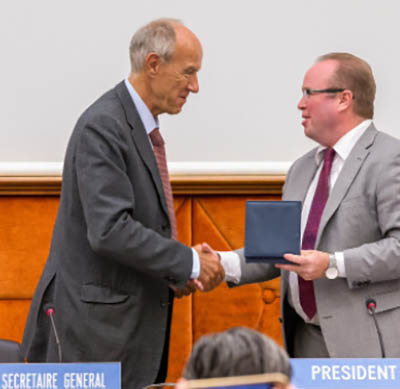

The CPVO collaborated in the second edition of the UPOV ‘Training the trainers’ course for Latin American countries, organised by UPOV, WIPO and the Spanish authorities, in Montevideo, Uruguay, in December 2016.
Senior officials of the UPOV office regularly attend meetings of experts or working groups organised by the CPVO dealing with technical and legal issues of common interest.
The CPVO signed a memorandum of understanding with UPOV in October 2004 for a programme of cooperation. Within the framework of this cooperation, the CPVO exchanged information with UPOV during the development of its CPVO Variety Finder in order to ensure compatibility with the existing UPOV plant variety databases (the PLUTO database and UPOV-ROM). Both databases contain data on plant varieties for which protection has been granted or that are the subject of an application for protection, and also those that are included in national lists of varieties for marketing purposes.
The CPVO Variety Finder operates on the basis of a system of codes assigned to botanical names and developed by UPOV. Since its release in July 2005, the CPVO and UPOV have started to exchange data extensively, UPOV collecting data from non-EU UPOV countries and the Office bringing together data from the EU.
In several regions of the world where countries are members of UPOV, such as Asia, Africa, Latin America and the Caribbean, there is an emergent interest in knowing the details and results of PVR systems with a regional scope, and learning from the experience accumulated. The CPVO frequently provides speakers for seminars and technical workshops organised by UPOV.
14.1.3. The EUIPO
In 2016, the CPVO and the EUIPO continued to exchange experiences in the field of trademark examination, specifically dealing with the assessment of similarity and likelihood of confusion, and variety denominations testing. Training has been mutually organised in this respect with the involvement of the members of the Boards of Appeal of the EUIPO and the CPVO. Furthermore, following the agreement on the conduct of the internal audit of the CPVO by the EUIPO internal auditor, in October 2016, the management team of the CPVO met with the management of the EUIPO to discuss further areas of cooperation with the academy, the international cooperation, and the IT and human resources departments. In the human resources field the CPVO has become a partner to the joined internship programme with the EPO and the EUIPO ‘Pan-European Seal’ to offer internship opportunities to highly qualified graduated students in IP law and has become a partner organisation to the EIPIN (European Intellectual Property Institutes Network) Innovation Society Joint-Doctorate to foster research in the field of intellectual property , which has led to the awarding of several doctoral degrees, one of which is in the domain of plant varieties. Moreover, in 2016, the CPVO continued to participate in the enforcement and legal working groups of the European Observatory on Infringements of Intellectual Property Rights, as well as in the plenary session. The second edition of the EPO-EUIPO industry-level analysis report on IPRs intensive industries and economic performance in the EU, delivered in October 2016, also included CPVRs. In March 2016, the CPVO also participated in the first conference jointly organised by the European Observatory, Europol and Eurojust on counterfeiting of foodstuff, beverages and agricultural products.
14.1.4. The European Patent Office
Following the seminar on the interface between patents and PVRs that took place in Brussels in June 2015, the CPVO has initiated contact with the EPO in order to establish a basis for future cooperation. On 11 February 2016, the CPVO signed an administrative arrangement with the EPO to enhance their cooperation through the exchange of technical knowledge and best practices in the area of plant-related patents and plant variety rights. The first implementation action of this agreement was the celebration on 21 and 22 September 2016 in Angers of the first workshop between CPVO and EPO examiners. A study visit to GEVES was also organised. The next steps will be the celebration of a second workshop in Munich on 30 March 2017 and a joint public conference to be held in Brussels in autumn 2017. In the framework of this cooperation, the CPVO has been invited to present the CPVR system to the joint conference organised by the EPO and the Hellenic Industrial Property Organisation held in Athens on 10 and 11 November 2016 on the inventions in the agricultural and food sectors.
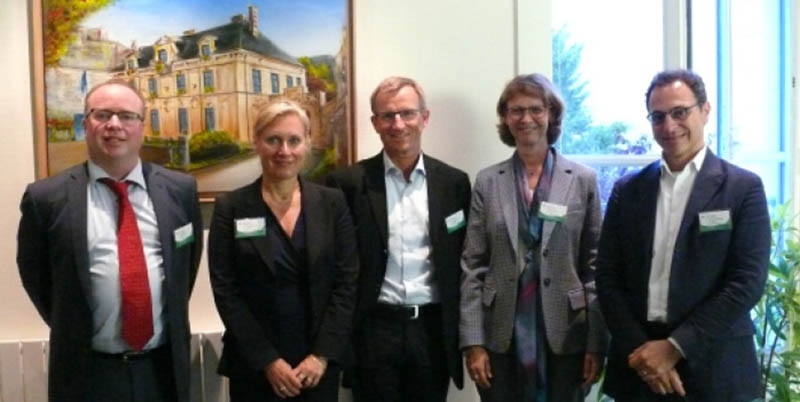
14.1.5. The Organisation for Economic Cooperation and Development
The President and two experts of the CPVO attended the joint OECD/UPOV/ISTA/AOSA workshop on biochemical and molecular methods held in Paris in June 2016.
14.1.6. Other EU institutions
The CPVO maintains regular external contacts by participating in meetings organised by:
- the Commission Directorate-General for Human Resources and Security — implementation of matters regarding the Staff Regulations;
- the Commission Directorate-General for Budget — implementation of the new financial regulation;
- the Commission Directorate-General for Trade — cooperation in the field of the IP Key EU-funded project with China;
- the Committee on Legal Affairs and the Committee on Agriculture and Rural Development both of the European Parliament.
In addition, other fields of external activity can be mentioned, such as:
- the relevant standing committees of the European Commission;
- the Management Board of the Translation Centre for the Bodies of the European Union;
- the coordination of the EU agencies at management level;
- the annual coordination meeting of the Publications Office of the European Union with the EU agencies;
- the meetings of the data protection officers (DPO) of the EU agencies, as well as other working groups established under the umbrella of the coordination of EU agencies, such as the Inter Agency Legal Network (IALN);
- Europol to raise the awareness of the law enforcement agencies about the infringement of plant variety rights in the framework of the operation OPSON to fight against counterfeiting of foodstuff. The cooperation aims at enhancing the cooperation between the involved law enforcement and regulatory authorities in the field of plant variety rights.
14.2. Training and promotion of the Community plant variety rights system
14.2.1. Participation in international fairs
The CPVO considers its participation in international fairs and open days at EOs to be a useful opportunity to promote the CPVR system, to have direct contact with applicants and to provide information to breeders. In 2016, the CPVO participated in two fairs, as detailed below.
- At the end of January 2016, the CPVO attended the International Trade Fair for Plants (IPM) in Essen, Germany. The stand was shared with experts from Bundessortenamt (Germany), Naktuinbouw (Netherlands), NIAB (United Kingdom) and GEVES (France). Even though the fair is open to the entire field of horticulture, the focus is on ornamentals.
- The Salon du Végétal, which takes place in mid-February in Angers, France, is a fair mainly for breeders of ornamental plants in which the CPVO regularly participates together with GEVES (France).
14.2.2. The African Regional Intellectual Property Organisation
On 6 July 2015, the African Regional Intellectual Property Organisation (ARIPO) adopted, in Arusha, Tanzania, the Arusha Protocol for the Protection of New Plant Varieties in ARIPO Member States. It was an honour for the President of the CPVO to attend this conference, which was opened by the Vice-President of Tanzania.
Following the adoption of the Arusha Protocol, the CPVO has collaborated with the ARIPO Secretariat, which is tasked with the drafting of the regulations for implementing the Arusha Protocol. In this context, the CPVO attended the experts review meeting that took place in June 2016 in Harare. In November 2016, a study visit of officials of the ARIPO office was hosted at the CPVO, during which the CPVR system was presented. The regulations were adopted by the ARIPO Administrative Council in its 40th session on 5-7 December 2016.
14.2.3. The African Intellectual Property Organisation roadmap
In 2014, OAPI became the second intergovernmental organisation and the 72nd member to join UPOV. OAPI then adopted an ambitious 5-year roadmap, from 2015 to 2020, which they are eagerly pursuing. The CPVO, GEVES, the French Association for Seeds and Seedlings (GNIS), Naktuinbouw and the United States Patent and Trademark Office are hugely supportive of this initiative and are actively supporting its implementation.
The OAPI operates a PVR system that covers the territory of its 17 Member States: Benin, Burkina Faso, Cameroon, Central African Republic, Chad, Comoros, Congo, Côte d’Ivoire, Equatorial Guinea, Gabon, Guinea, Guinea-Bissau, Mali, Mauritania, Niger, Senegal and Togo.
Together with partners in Europe, OAPI engaged in 2016 with the European Commission to get funds for the implementation of the roadmap. A decision of the Commission on the matter is pending.
14.2.4. IP Key China
‘Intellectual Property: A Key to Sustainable Competitiveness’ (IP Key) is the European Commission’s instrument to materialise and fund EU–China IP cooperation. The IP Key 3-year cooperation action (July 2013-June 2016) has been implemented (and co-funded) by the EUIPO in cooperation with the EPO. IP Key is meant to support European innovators and rights holders dealing with China through the development of an IP framework in China that is increasingly effective, fair, transparent, and based upon international best practices.
China adopted the UPOV 1978 revision on 23 April 1999. The Ministry of Agriculture (MoA) and State Forestry Administration (SFA) of China have expressed interest in participating in a project under IP Key to help assess China’s potential accession to UPOV ‘91. The CPVO has participated in the activities intended to enable MoA and SFA to make an assessment about the costs and benefits of acceding to UPOV ’91 and to propose recommendations that may result in China acceding to the agreement. The CPVO has also provided relevant materials/literature on EU countries’ experiences with UPOV ’91. A study visit of a team of Chinese experts has been hosted at the CPVO’s premises. MoA has served as the leading Chinese body for the activity, in coordination with the SFA in organising and implementing the activity. The final study on the potential impacts of China’s accession to UPOV ’91 is expected to be presented in spring 2017 in Beijing.


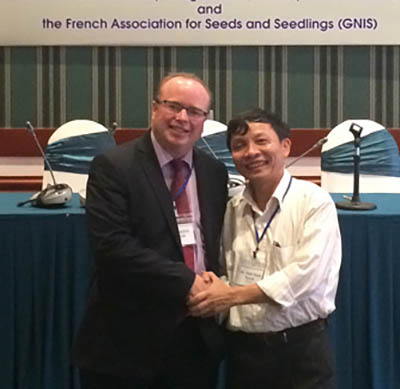

14.2.5. Asian countries
- Taiwan
The CPVO continues its efforts with the authorities in Taiwan and the Dutch examination office Naktuinbouw in view of technical cooperation for the testing of orchid varieties. The aim is to harmonise the technical procedures as much as possible in order to enable an eventual mutual acceptance of DUS reports. In 2016, an administrative arrangement was signed between Taiwan and the CPVO setting out the aims of the cooperation.
- Japan
The CPVO has ‘reactivated’ previous activities with the Japanese authorities in the field of DUS testing and in particular the testing of varieties of Petunia/Calibrachoa, roses and chrysanthemum. The aim is also to reach a situation where DUS examination results could be mutually accepted. In 2016, an administrative arrangement was signed between Japan and the CPVO setting out the aims of the cooperation.
- East Asia Plant Variety Protection Forum
The CPVO participated in a seminar on the enforcement of plant variety rights in September 2016, in Hanoi, Vietnam. The President of the CPVO gave a presentation and chaired part of the seminar.
14.2.6. Universities
The CPVO continues to cooperate with a network of universities with the aim of spreading awareness of PVRs among students and academics. In this respect, the CPVO is one of the partner institutions of the European Intellectual Property Institutes Network (EIPIN) Innovation Society joint doctorate to foster research in the field of intellectual property. This has led to the awarding of several doctoral degrees, one of which is in the domain of plant varieties. The project is entirely funded under the Marie Skłodowska-Curie actions of the European Commission. Moreover, for the third year, the CPVO is continuing its collaboration with the universities of Alicante and Strasbourg. In particular, the CPVO supports the Magister Lvcentinvs, the master’s in intellectual property of the University of Alicante that has implemented a special intensive course dedicated to plant variety rights. PVRs are often neglected in classical IP academic programmes. Now it will be an integral element of their IP curricula. This cooperation will invite institutional and academic specialists to focus on PVR issues. The CPVO continues to collaborate with the ESSCA school of management based in Angers in the framework of the European Sustainability Policies course and the Wageningen University.
The CPVO has also reviewed the case-law database with the valuable cooperation of Queen Mary University of London. Such an improved database will allow the CPVO to develop a greater understanding of the national implementation of PVRs, while also fostering a culture of PVR excellence.
The above partnerships highlight the importance the CPVO attaches to the training of PVR experts and its commitment to continue to attract the best minds to the field of PVRs. The CPVO is eager to attract the brightest aspiring IP experts to the field of PVRs, and engaging with universities is the right way to do this.
15. Public access to documents
In 2001, specific rules on public access to documents held by the Parliament, the Council and the Commission were introduced by the adoption of Regulation (EC) No 1049/2001 of the European Parliament and of the Council of 30 May 2001 regarding public access to European Parliament, Council and Commission documents. In order for these rules to also apply to documents held by the CPVO, a new article, Article 33a, was introduced into the basic regulation in 2003 by the adoption of Council Regulation (EC) No 1650/2003 of 18 June 2003 amending Regulation (EC) No 2100/94 on Community plant variety rights.
Article 33a contains the following elements.
- Regulation (EC) No 1049/2001 shall also apply to documents held by the CPVO. This provision entered into force on 1 October 2003.
- The AC shall adopt practical arrangements for implementing Regulation (EC) No 1049/2001. The AC adopted such practical arrangements on 25 March 2004. These rules entered into force on 1 April 2004.
- Decisions taken by the CPVO on public access to documents may form the subject of a complaint to the Ombudsman or of an action before the Court of Justice.
Regulation (EC) No 1049/2001 and the rules adopted by the AC (modified during the October 2014 meeting of the AC in order to reflect the new work organisation within the Legal Unit of the CPVO) are available on the website of the CPVO. Information on these rules and the forms to use when requesting access to a document are also published on the website of the Office.
The CPVO follows up the implementation and application of the rules on public access to documents by reporting annually on information such as the number of cases in which the Office refused to grant access to documents and the reasons for such refusals.
| Year of receipt | Number of requests for access received | Number of refusals | Reasons for such refusals | Confirmatory applications |
|---|---|---|---|---|
| 2004 | 30 | 6 (partial) | Confidential technical questionnaire not sent | |
| 2005 | 55 | 2 (partial) | Confidential technical questionnaire not sent | |
| 2006 | 58 | 6 (partial) | Confidential technical questionnaire not sent | |
| 2007 | 55 | 17 (partial) | Confidential technical questionnaire not sent/ information of commercial interest not sent | 2 (successful) |
| 2008 | 57 | 19 (partial) | Confidential technical questionnaire/photo/ assignment not sent | 1 (unsuccessful) |
| 2009 | 54 | 28 (partial) | Confidential technical questionnaire not sent/ information of commercial interest not sent/ photos not available | 2 (successful) |
| 2010 | 63 | 29 (partial) | Confidential technical questionnaire not sent/ information of commercial interest not sent | 1 (unsuccessful) |
| 2011 | 71 | 27 (partial) | Confidential technical questionnaire not sent/ information of commercial interest not sent | 2 (1 unsuccessful and 1 successful) |
| 2012 | 88 | 57 (partial) | Confidential technical questionnaire not sent/ information of commercial interest not sent | 8 (3 unsuccessful and 5 successful) |
| 2013 | 63 | 18 (partial) | Confidential technical questionnaire not sent/ information of commercial interest not sent | 1 (unsuccessful) |
| 2014 | 81 | 27 (partial) | Confidential technical questionnaire not sent/ information of commercial interest not sent | 4 (1 unsuccessful and 3 successful) |
| 2015 | 75 | 17 (partial) | Confidential questionnaire not sent | 3 (2 unsuccessful and 1 successful) |
| 2016 | 99 | 26 (partial) | Confidential technical questionnaire not sent | 4 (successful) |
16. Report of the data protection officer
16.1. Legal background
Regulation (EC) No 45/2001 of the European Parliament and of the Council of 18 December 2000 on the protection of individuals with regard to the processing of personal data by the Community institutions and bodies and on the free movement of such data was adopted for the purpose of complying with Article 16 of the Treaty on the Functioning of the European Union. Article 16 requires, in effect, that EU acts on the protection of individuals with regard to the processing of personal data and the free movement of such data are applied by the European Union institutions and bodies.
‘Processing of data’ has quite a broad meaning, and refers not only to transferring data to third parties but also to collecting, recording and storing data, whether or not by electronic means.
16.2. Role and tasks of the data protection officer (DPO)
Regulation (EC) No 45/2001 requires the nomination of at least one DPO in the EU institutions and bodies. The DPO should ensure, in an independent manner, the internal application of the provisions in the regulation and that the rights and freedoms of the data subjects are unlikely to be adversely affected by the processing operations.
The DPO keeps a register of all the processing operations carried out by the CPVO and notified either to the DPO or to the European Data Protection Supervisor (EDPS). This register, which must contain information explaining the purpose and conditions of the processing operations, is accessible to any interested person.
The mandate of the current DPO was renewed by the decision of the CPVO President of 31 August 2016. As of March 2016, a trainee was attached to the DPO as part of the CPVO in-service training programme.
16.3. Report of the data protection officer for 2016
16.3.1. Register of data processing operations and inventory
The DPO maintains a register of data protection operations in the form of a database, available from the CPVO intranet under the DPO section. This register contains notifications (Article 25) received from the controllers, as well as prior checking operations (Article 27) sent to the EDPS for an opinion. In an attempt to streamline the work, it has been redesigned and now also integrates the inventory of future processing operations awaiting their notification.
By the end of 2016, the register contained 80 entries composed of 50 notifications and 25 prior checking operations with an opinion from the EDPS. Five additional processing operations were listed for implementation in the near future (inventory).
16.3.2. Thematic guidelines of the European Data Protection Supervisor
The EDPS issues guidelines on specific themes in order to provide guidance for EU institutions and bodies in certain fields relevant to them. These guidelines also facilitate the prior checking by the EDPS of processing operations in the EU agencies as they serve as a reference document helping agencies to align their current practices with the data protection rules.
The EDPS adopted a thematic guideline on security measures for personal data processing. The EDPS also published a guideline on processing personal information within a whistle-blowing procedure as well as guidelines on the protection of personal data processed through web services and/or mobile applications provided by EU institutions.
16.3.3. Information provided to data subjects and controllers
The staff members of the CPVO are informed about data protection issues through the DPO intranet, which is updated on a regular basis. It contains the principles of data protection, the subjects’ rights, the controllers’ obligations, the regulation, some documents and decisions of the President relating to data protection issues, data protection notices and privacy statements, the register and the notification forms.
Individuals whose data are processed by the CPVO are routinely informed about the nature, the extent and the limitations of the data processing by means of specific data protection notices. These notices are made available to data subjects before any processing of personal data takes place.
In addition, the DPO organised individual meetings with the controllers/heads of units and others involved in processing personal data as part of their duties for all existing procedures that required a review of the notification and for new data processing operations.
During a training session on the CPVO’s access to documents procedure, the interaction with the data protection rules was also highlighted. In a number of cases staff members had requested specific data-protection-related information. Increasingly colleagues have shown initiative in an endeavour to enhance compliance with data protection principles.
During a data protection audit of the video surveillance system introduced at the CPVO, the DPO could confirm compliance with the internal procedure and the continuous validity of the arrangements made.
16.3.4. Meetings of the data protection officers’ network in 2016
As a function common to all EU institutions and bodies, DPOs are now well established and meet within the framework of a DPO network twice a year. These meetings are organised in order to share know-how and best practices. They usually include a training module and a session with the EDPS.
The DPO of the CPVO participated in the meeting of the DPOs’ network hosted by the EUIPO in October 2016 in Alicante.
17. Appeal procedures
17.1. Composition of the Board of Appeal of the Community Plant Variety Office
The Board of Appeal of the CPVO is composed of a Chair, an alternate to the Chair and qualified members.
17.1.1. Chair and alternate of the Board of Appeal
Mr Paul van der Kooij’s position as Chair of the Board of Appeal was renewed for a term of 5 years by Council Decision of 4 December 2012 (OJ C 378, 8.12.2012, p. 2). His mandate runs from 18 December 2012 until 17 December 2017. His alternate, Ms Sari Haukka, was renewed for a second term of 5 years by Council Decision of 16 June 2016 (OJ C 223, 21.6.2016, p. 5). Her mandate runs from 15 October 2016 until 14 October 2021.
17.1.2. Qualified members of the Board of Appeal
Since the list of qualified members adopted in 2011 was coming to an end on 22 February 2016, the AC of the CPVO at its meeting of 30 September 2015 adopted, in accordance with the procedure prescribed by Article 47(2) of Council Regulation (EC) No 2100/94, a new list of 23 qualified members of the Board of Appeal for a period of 5 years starting on 23 February 2016. Both lists are detailed below with the periods of application.
| 23 February 2011 - 22 February 2016 | 23 February 2016 - 22 February 2021 |
|---|---|
| 1. Cornelis Joost Barendrecht 2. Pier Giacomo Bianchi 3. Richard Bianchi 4. Beatrix Boenisch 5. Richard Brand 6. Zoltán Csurös 7. Krieno Adriaan Fikkert 8. Huibert Cornelis Ghijsen 9. Joël Guiard 10. Helen Johnson 11. Michaël Köller 12. Miguel Angelo Pinheiro de Carvalho 13. Dirk Reheul 14. Kurt Riechenberg 15. Timothy Wace Roberts 16. Elizabeth Scott 17. Hanns Ullrich 18. Nicolaas Petrus van Marrewijk 19. Arnold Jan Piet van Wijk | 1. Beatrix Bönisch 2. Richard Brand 3. Paul de Heij 4. Krieno Fikkert 5. Huib Ghijsen 6. Joël Guiard 7. Helen Johnson 8. Ofelia Kirkorian-Tsonkova 9. Michael Köller 10. François Lallouet 11. Stephan Martin 12. Miguel Angelo Pinheiro De Carvalho 13. André Pohlmann 14. Dirk Reheul 15. Kurt Riechenberg 16. Beate Rücker 17. Ivana Rukavina 18. Elizabeth Scott 19. Péter Sipos 20. Sven Stürmann 21. Zsolt Szani 22. Hanns Ullrich 23. Nicolaas Petrus van Marrewijk |
17.2. Decisions of the Board of Appeal in 2016
The Board of Appeal took 11 decisions in 2016.
- On 3 March 2016, in Appeal Case A001/2014 (‘Tang Gold’), the Board of Appeal found the appeal inadmissible and the appellant had to bear the costs of the appeal proceedings.
- On 3 March 2016, in Appeal Case A003/2014 (‘Tang Gold’), the Board of Appeal found the appeal inadmissible and the appellant had to bear the costs of the appeal proceedings.
- On 22 April 2016, in Appeal Case A005/2014 (‘Gala Schnico’), the Board of Appeal dismissed the appeal and the appellant had to bear the costs of the appeal proceedings.
- On 29 April 2016, in Appeal Case A006/2014 (‘Tang Gold’), the Board of Appeal found the appeal inadmissible and the appellant had to bear the costs of the appeal proceedings.
- On 29 April 2016, in Appeal Case A007/2014 (‘Tang Gold’), the Board of Appeal dismissed the appeal and the appellant had to bear the costs of the appeal proceedings.
- On 29 April 2016, in Appeal Case A008/2014 (‘Tang Gold’), the Board of Appeal dismissed the appeal and the appellant had to bear the costs of the appeal proceedings.
- On 15 August 2016, in Appeal Case A006/2015 (‘Markeep’), the Board of Appeal dismissed the appeal and the appellant had to bear the costs of the appeal proceedings.
- On 22 August 2016, in Appeal Case A009/2015 (‘Starlight’), the Board of Appeal dismissed the appeal and the appellant had to bear the costs of the appeal proceedings.
- On 2 September 2016, in Appeal Case A005/2007-RENV (‘Sumost 01’), the Board of Appeal dismissed the appeal and the appellant had to bear the costs of the appeal proceedings.
- On 2 September 2016, in Appeal Case A006/2007-RENV (‘Lemon Symphony’), the Board of Appeal dismissed the appeal and the appellant had to bear the costs of the appeal proceedings.
- On 2 September 2016, in Appeal Case A007/2007-RENV (‘Lemon Symphony’), the Board of Appeal dismissed the appeal and the appellant had to bear the costs of the appeal proceedings.
Summaries and complete decisions of the above-mentioned cases are available in the CPVO case-law database.
17.3. Further appeals to the Court of Justice in 2016
In accordance with Article 73 of Regulation (EC) No 2100/94, a further appeal to the Court of Justice shall lie from decisions of the Board of Appeal.
17.3.1. New further appeals in 2016 In 2016, three further actions were lodged with the General Court.
- Case T-177/16 was lodged with the General Court on 22 April 2016 against Decision A001/2015 of 15 December 2015 of the Board of Appeal of the CPVO for ‘Braeburn 78’.
- Case T-445/16 was lodged with the General Court on 5 August 2016 against Decision A005/2014 of 22 April 2016 of the Board of Appeal of the CPVO for ‘Gala Schnico’.
- Case T-405/16 was lodged with the General Court on 29 July 2016 against Decision A006/2014 of 29 April 2014 of the Board of Appeal of the CPVO for ‘Tang Gold’.
17.3.2. Ruling of the General Court in 2016
No new ruling of the General Court has been issued in 2016.
17.3.3. Ruling of the Court of Justice in 2016
No new ruling of the Court of Justice has been issued in 2016.
17.3.4. State of affairs of the further appeals lodged with the Court of Justice
| Case No before the General Court | Contested decision | Variety denomination | Date of General Court ruling | Date of further appeal to the Court of Justice | Case No before the Court of Justice | Date of Court of Justice ruling |
|---|---|---|---|---|---|---|
| T-95/06 | A001/2005 | Nadorcott | 31.1.2008 | N/A | N/A | N/A |
| T-187/06 | A003/2004 | Sumcol 01 | 19.11.2008 | 29.1.2009 | C-38/09 P | 15.4.2010 |
| T-187/06 DEP I | Non-payment of recoverable costs of the proceedings T-187/06 | Sumcol 01 | 16.9.2013 | N/A | N/A | N/A |
| N/A | N/A | Sumcol 01 | N/A | 7.2.2013 | C-38/09 P-DEP | 10.10.2013 |
| T-133/08 | A007/2007 | Lemon Symphony | 18.9.2012 | 28.11.2012 | C-546/12 P | 21.5.2015 |
| T-134/08 | A006/2007 | Lemon Symphony | 18.9.2012 | 28.11.2012 | C-546/12 P | 21.5.2015 |
| T-135/08 | A003/2007 and A004/2007 | Gala Schnitzer | 13.9.2010 | 15.11.2010 | C-534/10 P | 19.12.2012 |
| T-177/08 | A005/2007 | Sumost 01 | 18.9.2012 | 28.11.2012 | C-546/12 P | 21.5.2015 |
| T-242/09 | A010/2007 | Lemon Symphony | 18.9.2012 | 28.11.2012 | C-546/12 P | 21.5.2015 |
| T-367/11 | A007/2010 | Southern Splendour | 21.10.2013 | N/A | N/A | N/A |
| T-91/14 | A004/2007 | Gala Schnitzer | 10.9.2015 | 23.11.2015 | C-625/15 P | Pending |
| T-92/14 | A003/2007 | Gala Schnitzer | 10.9.2015 | 23.11.2015 | C-625/15 P | Pending |
| T-767/14 | A007/2013 | Oksana | Pending | |||
| T-140/15 | A010/2013 | M02205 | Pending | |||
| T-425/15 | A003/2010 | Seimora | Pending | |||
| T-426/15 | A002/2014 | Seimora | Pending | |||
| T-428/15 | A007/2009 | Sumost 02 | Pending | |||
| T-177/16 | A001/2015 | Braeburn 78 | Pending | |||
| T-445/16 | A005/2014 | Gala Schnico | Pending | |||
| T-405/16 | A006/2014 | Tang Gold | Pending |
17.4. Appeals received by the Community Plant Variety Office and decisions reached by the Board of Appeal since its inception (statistics)
17.4.1. Number of appeals lodged per year between 1996 and 2016
Some 165 appeals have been lodged with the CPVO since the opening of the Office. These are distributed as shown in Graph 15.

17.4.2. Legal basis of the appeals lodged since 1996 (with reference to Council Regulation (EC) No 2100/94)

17.4.3. Decisions of the Board of Appeal per year
A total of 81 decisions were taken by the Board of Appeal of the CPVO between 1996 and 2016, distributed as detailed in Graph 17.

17.4.4. Outcome of the 81 decisions of the Board of Appeal (1996-2016)

The references of the decisions taken by the Board of Appeal are given in the following table.
| Year | Appeal case number and date of decision of the Board of Appeal |
|---|---|
| 1999 | A002/1998 of 14.9.1999 |
| 2000 | A001/1999 of 25.1.2000 A002/1999 of 19.5.2000 |
| 2001 | A002/2000 of 27.3.2001 A004/2000 of 6.12.2001 |
| 2002 | A005/2000 of 28.5.2002 |
| 2003 | A005/2002 of 2.4.2003 A001/2002, A002/2002 and A003/2002 of 1.4.2003 A018/2002 of 14.5.2003 A008/2002, A009/2002, A010/2002, A011/2002, A012/2002 and A013/2002 of 15.5.2003 A017/2002 of 3.4.2003 A023/2002 of 8.10.2003 A031/2002 of 8.12.2003 A021/2002 of 9.12.2003 |
| 2004 | A003/2003 and A004/2003 of 4.6.2004 A005/2003 and A006/2003 of 28.9.2004 A001/2004 of 16.12.2004 |
| 2005 | A006/2004 of 15.6.2005 A005/2004 of 16.6.2005 A004/2004 of 18.7.2005 A001/2005 of 8.11.2005 |
| 2006 | A003/2004 of 2.5.2006 A004/2005 of 13.10.2006 A007/2005 of 7.7.2006 |
| 2007 | A001/2007 of 11.9.2007 A003/2007 and A004/2007 of 21.11.2007 A005/2007, A006/2007 and A007/2007 of 4.12.2007 |
| 2008 | A011/2007 of 9.9.2008 A009/2008 of 2.12.2008 A001/2008 and A002/2008 of 4.12.2008 |
| 2009 | A010/2007 of 23.1.2009 A004/2008 and A005/2008 of 21.4.2009 A010/2008 and A011/2008 of 8.10.2009 |
| 2010 | A018/2008 of 15.3.2010 |
| 2011 | A001/2010, A005/2010, A006/2010 and A007/2010 of 18.2.2011 |
| 2012 | A009/2011 of 17.1.2012 A001/2012 of 10.10.2012 |
| 2013 | A003/2007 and A004/2007 of 20.9.2013 (second decisions for the same cases further to remittal from the Court of Justice) A007/2011 of 23.4.2013 |
| 2014 | A006/2013 of 13.1.2014 A004/2013 of 4.4.2014 A008/2013 of 1.7.2014 A007/2013 of 2.7.2014 A016/2013 of 11.9.2014 A010/2013 of 26.11.2014 |
| 2015 | A007/2009 of 24.2.2015 A002/2010 of 24.2.2015 A003/2010 of 24.2.2015 A002/2014 of 24.2.2015 A001/2015 of 15.12.2015 A002/2015 of 15.12.2015 |
| 2016 | A001/2014 of 3.3.2016 A003/2014 of 3.3.2016 A005/2014 of 22.4.2016 A006/2014 of 29.4.2016 A007/2014 of 29.4.2016 A008/2014 of 29.4.2016 A006/2015 of 15.8.2016 A009/2015 of 22.8.2016 A005/2007-RENV of 2.9.2016 A006/2007-RENV of 2.9.2016 A007/2007-RENV of 2.9.2016 |
The detailed decisions of the Board of Appeal are available in the CPVO case-law database on the CPVO website.
18. Conflicts of interest
In 2016, the CPVO continued its participation in the Interagency Task Force on Conflicts of Interest organised by the Commission’s Directorate-General for Health and Food Safety, with the aim of implementing the Commission’s ‘Guidelines on the prevention and management of conflicts of interest in EU decentralised agencies’ (for members of the management board, executive directors, experts in scientific committees or other similar bodies and members of boards of appeal) of December 2013.
Apart from the decision-making process relating to the core business of the CPVO, i.e. granting IP rights for new plant varieties, there are other decisions and procedures in the CPVO in which impartiality and objectivity are very important, such as employment procedures, public procurement and providing funds for R&D projects. Regarding employment procedures in particular, CPVO staff members are subject to the Staff Regulations, which contain several provisions addressing situations of conflicts of interest. Nevertheless, over the years, procedures, provisions in agreements and declarations of absence of conflicts of interest have been introduced in order to remind the persons concerned about the importance of acting independently, in transparency and with integrity.
Having taken the Commission guidelines into consideration, the AC adopted during its meeting in October 2015 a CPVO policy on prevention and management of conflict of interest. In accordance with the practice applied by all other EU agencies for which the European Commission (Directorate-General for Health and Food Safety) is the partner directorate-general, AC members (and their alternates) have been asked to sign a declaration of absence of conflict of interest. The AC members have agreed to sign the proposed declaration and to amend the ‘CPVO policy on prevention and management of conflict of interest’ during its meeting in April 2016.
Main acronyms and abbreviations
| A | |
| AAB | Audit Advisory Board of the CPVO |
|---|---|
| AC | Administrative Council of the CPVO |
| AGES | Österreichische Agentur für Gesundheit und Ernährungssicherheit (AGES) — Austrian Agency for Health and Food Safety (Austria) |
| AFNOR | Association Française de Normalisation (French Standardisation Association) |
| APHA | Animal and Plant Health Agency (United Kingdom) |
| ARIPO | African Regional Intellectual Property Organisation |
| B | |
| basic regulation | Council Regulation (EC) No 2100/94 of 27 July 1994 on Community plant variety rights |
| C | |
| Ciopora | International Community of Breeders of Asexually Reproduced Ornamental and Fruit Varieties |
| Coboru | Centralny Osrodek Badania Odmian Roslin Uprawnych — Research Centre for Cultivar Testing (Poland) |
| CPVO | Community Plant Variety Office |
| CPVR | Community plant variety rights |
| CREA-FRU | Consiglio per la ricerca in agricoltura e l’analisi dell’economia agrarian — Centro di Ricerca per la Frutticoltura — Agricultural Research Council — Fruit Tree Research Unit (Italy) |
| CREA-SCS | Consiglio per la ricerca in agricoltura e l’analisi dell’economia agraria - Centro di Sperimentazione e Certificazione delle Sementi — Agricultural Research Council — Seed Testing and Certification Unit (Italy) |
| CREA-VIT | Consiglio per la ricerca in agricoltura e l’analisi dell’economia agraria - Centro di ricerca per la viticoltura — Agricultural Research Council — Wine Growing Research Unit (Italy) |
| D | |
| DNA | deoxyribonucleic acid |
| DPO | data protection officer |
| DUS | distinctness, uniformity and stability |
| E | |
| EDPS | European Data Protection Supervisor |
| EIPIN | European IP Institutes Network |
| EO(s) | examination office(s) |
| EPO | European Patent Office |
| ESA | European Seed Association |
| EU | European Union |
| EUIPO | European Union Intellectual Property Office |
| EVIRA | Elintarviketurvallisuusvirasto — Finnish Food Safety Authority (Finland) |
| F | |
| fees regulation | Commission Regulation (EC) No 1238/95 of 31 May 1995 establishing implementing rules for the application of Council Regulation (EC) No 2100/94 as regards the fees payable to the CPVO |
| Frumatis | Fruit Reproductive Material Information System |
| G | |
| GEVES | Groupe d’Etude et de contrôle des Variétés Et des Semences — Group for the Study and Control of Varieties and Seeds (France) |
| I | |
| IALN | Inter Agency Legal Network |
| Imoddus | ad hoc working group for the integration of molecular data into DUS testing |
| INIA | Instituto Nacional de Investigación y Tecnología Agraria y Alimentaria — National Research Institute for Agriculture and Food Research and Technology (Spain) |
| IP | intellectual property |
| IPRs | intellectual property rights |
| ISTIS | Institutului de Stat pentru Testarea si Inregistrarea Soiurilor — State Institute for Variety Testing and Registration (Romania) |
| IT | information technology |
| K | |
| KAVB | De Koninklijke Algemeene Vereeniging voor Bloembollencultuur — Royal General Bulb Growers’ Association (Netherlands) |
| N | |
| NÉBIH | Nemzeti Élelmiszerlánc-biztonsági Hivatal — National Food Chain Safety Office (Hungary) |
| NIAB | National Institute of Agricultural Botany (United Kingdom) |
| O | |
| OAPI | African Intellectual Property Organisation |
| OECD | Organisation for Economic Cooperation and Development |
| OEVV | Spanish Plant Variety Office (Spain) |
| the Office | the Community Plant Variety Office |
| OHIM | Office for the Harmonisation of the Internal Market (Trade marks and Designs) |
| OJ | Official Journal of the European Union |
| OSR | oilseed rape |
| P | |
| Plantum | Dutch association for the plant reproduction material sector |
| proceedings regulation | Commission Regulation (EC) No 874/2009 of 17 September 2009 establishing implementing rules for the application of Council Regulation (EC) No 2100/94 as regards proceedings before the CPVO |
| PVR | plant variety rights |
| Q | |
| QAS | Quality Audit Service |
| R | |
| R&D | research and development |
| S | |
| SASA | Science and Advice for Scottish Agriculture (United Kingdom) |
| SNP | Single-nucleotide polymorphism |
| T | |
| TWF | UPOV Technical Working Party for Fruit Crops |
| TLO | technical liaison officer |
| TRIPS | trade-related aspects of intellectual property rights |
| U | |
| UKSUP | Ústredný kontrolný a skúšobný ústav poľnohospodársky — Central Controlling and Testing Institute in Agriculture (Slovakia) |
| ÚKZÚZ | Ústředního kontrolního a zkušebního ústavu zemědělsky — Central Institute for Supervising and Testing in Agriculture (Czech Republic) |
| UPOV | International Union for the Protection of New Varieties of Plants |
| W | |
| WIPO | World Intellectual Property Organisation |
About
Community Plant Variety Office (CPVO)
3 boulevard Maréchal Foch
CS 10121
49101 ANGERS CEDEX 2 - FRANCE
Tel. +33 241256400
Enquiries: Contact page
Website: cpvo.europa.eu/en
Twitter: @CPVOTweets
More information on the European Union is available on the internet (http://europa.eu).
Luxembourg: Publications Office of the European Union, 2017
| ISBN 978-92-9152-168-5 | ISSN 1680-2845 | doi:10.2803/56671 | TG-AC-17-001-EN-C | |
| ISBN 978-92-9152-166-1 | ISSN 2363-3247 | doi:10.2803/24367 | TG-AC-17-001-EN-N | |
| HTML | ISSN 2363-3247 | doi:10.2803/396822 | TG-AC-17-001-EN-Q |
© European Union, 2017
Reproduction is authorised provided the source is acknowledged.
This publication is available in the following format:
PDFHOW TO OBTAIN EU PUBLICATIONS
Free publications:
- one copy:
- via EU Bookshop.
- more than one copy or posters/maps:
- from the European Union’s representations;
- from the delegations in non-EU countries;
- by contacting the Europe Direct service or calling 00 800 6 7 8 9 10 11 (freephone number from anywhere in the EU) (*).
Priced publications:
- via EU Bookshop.
